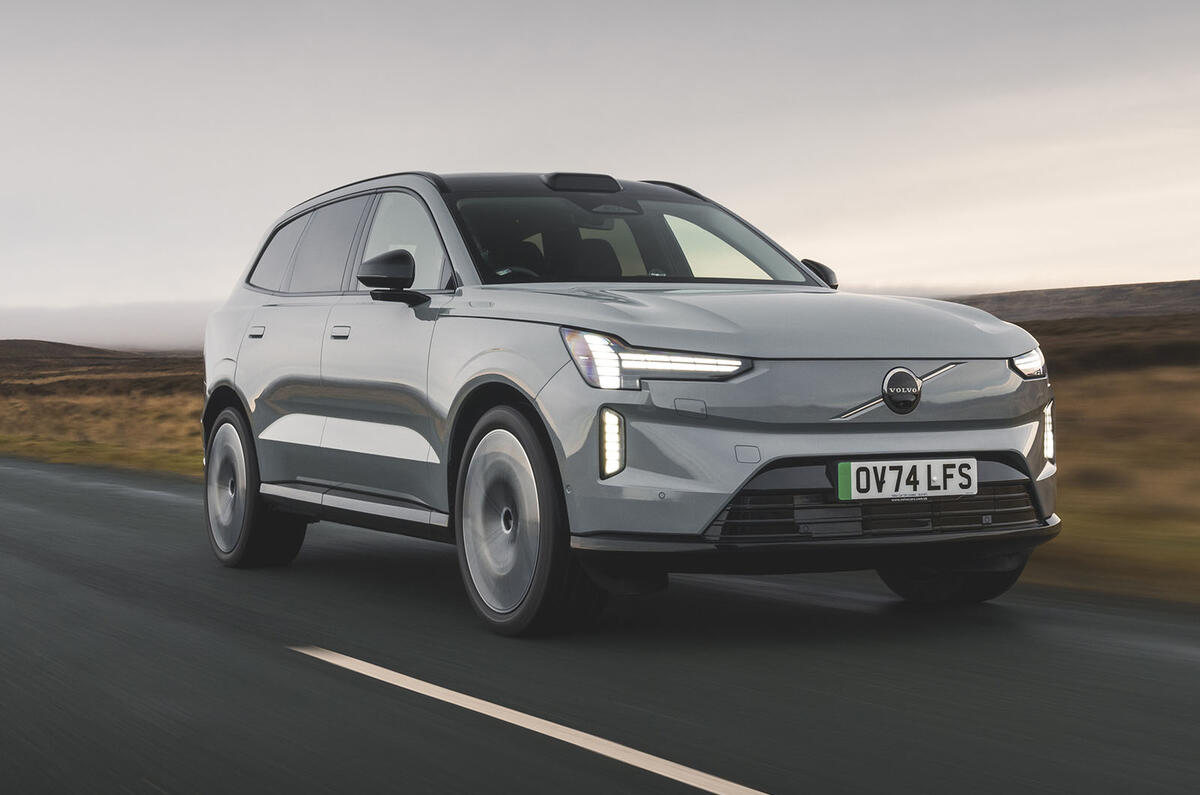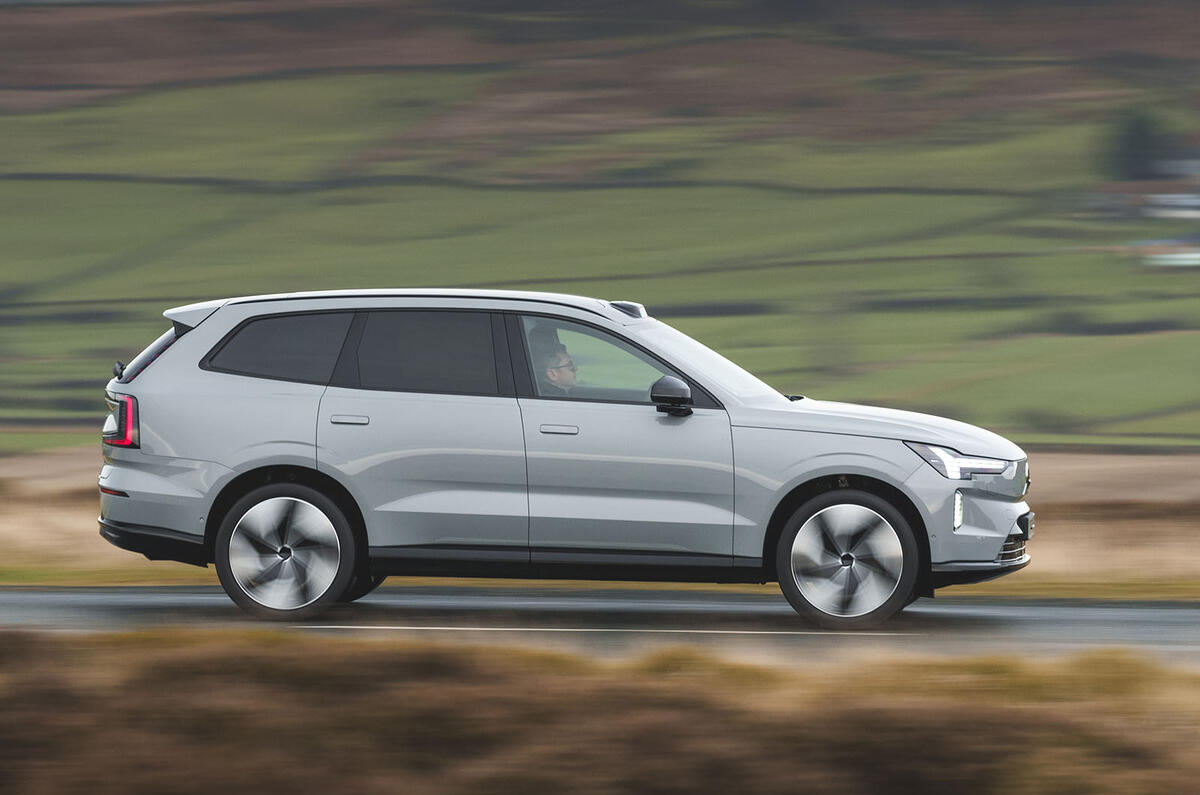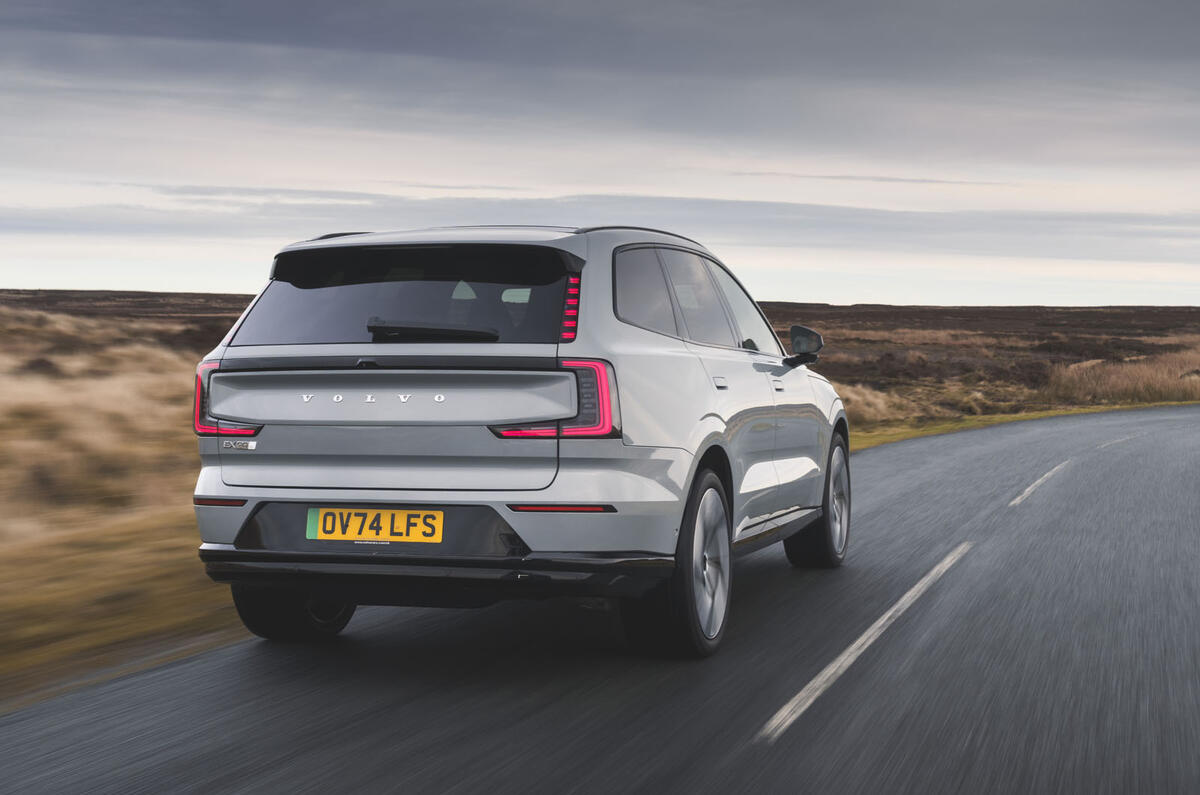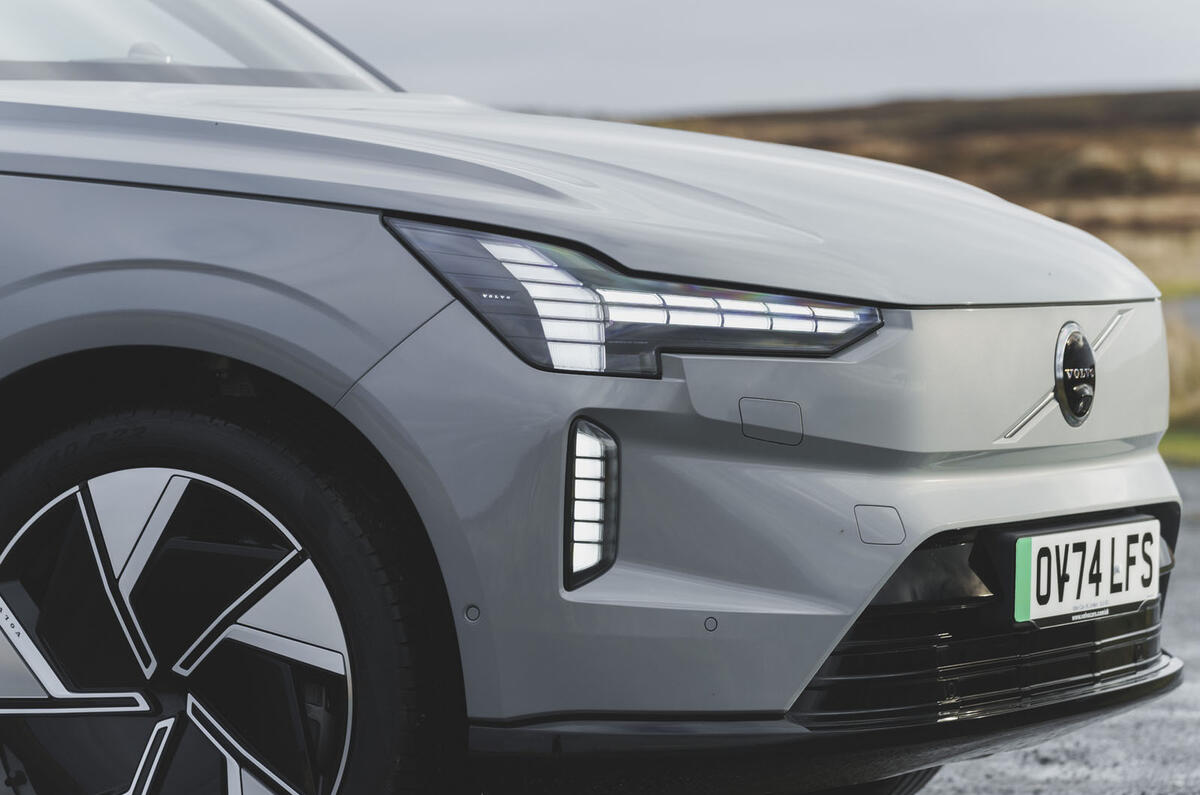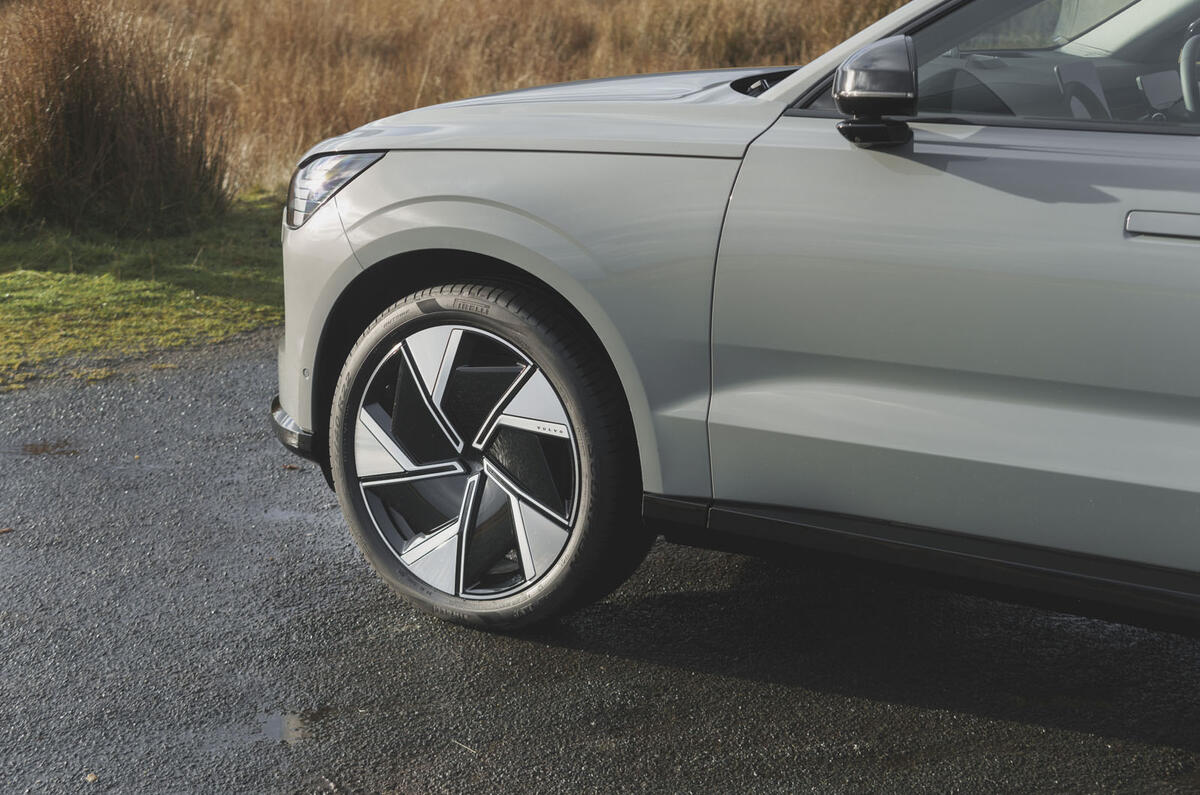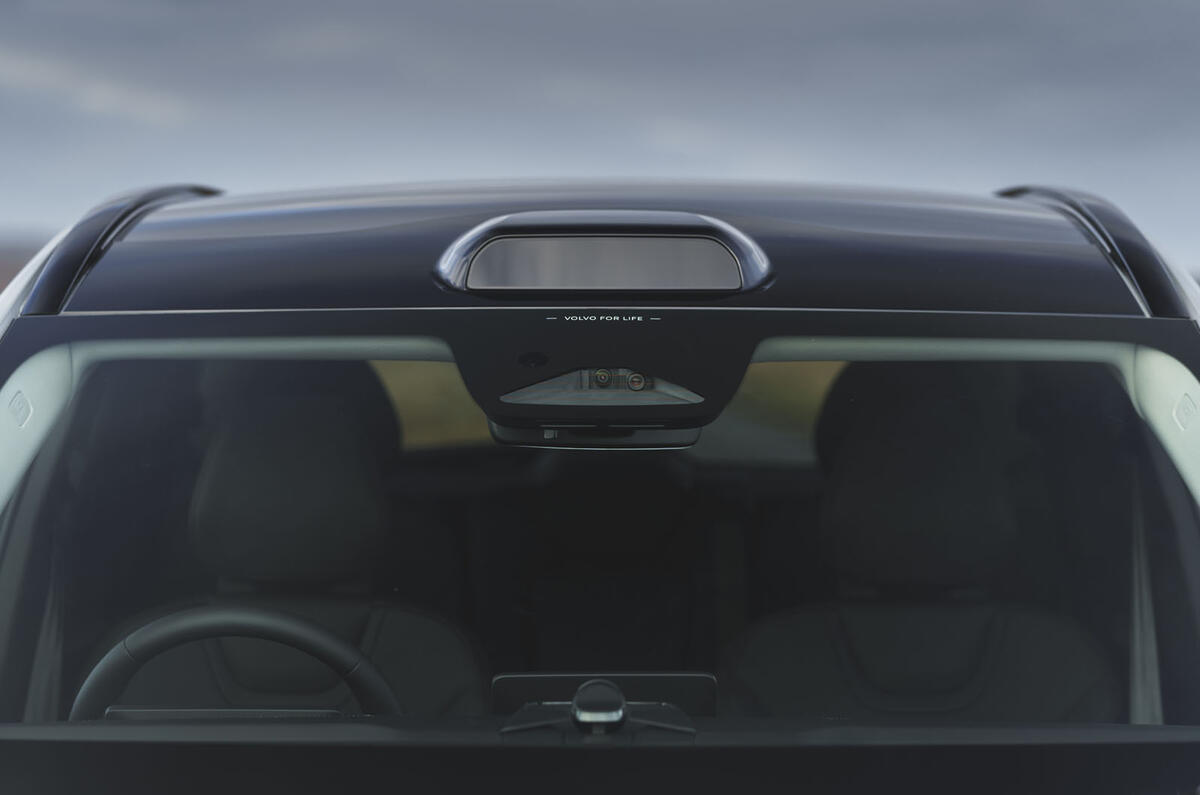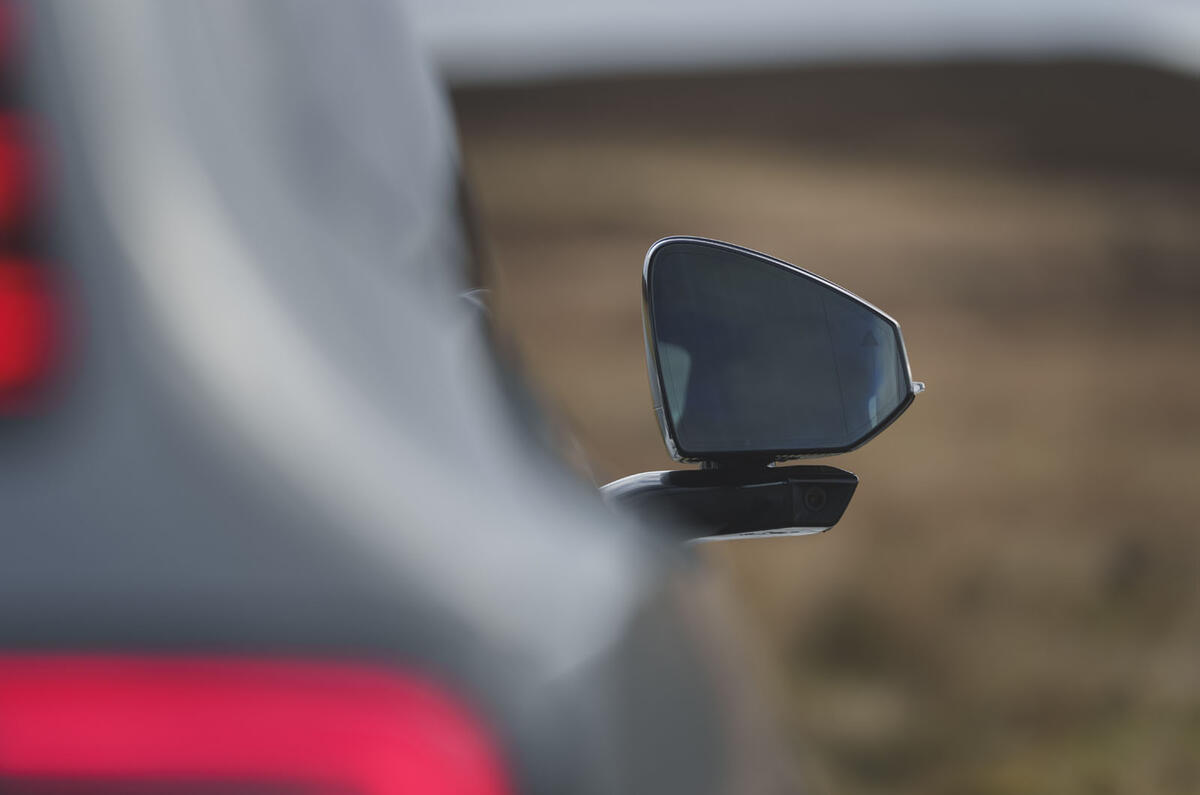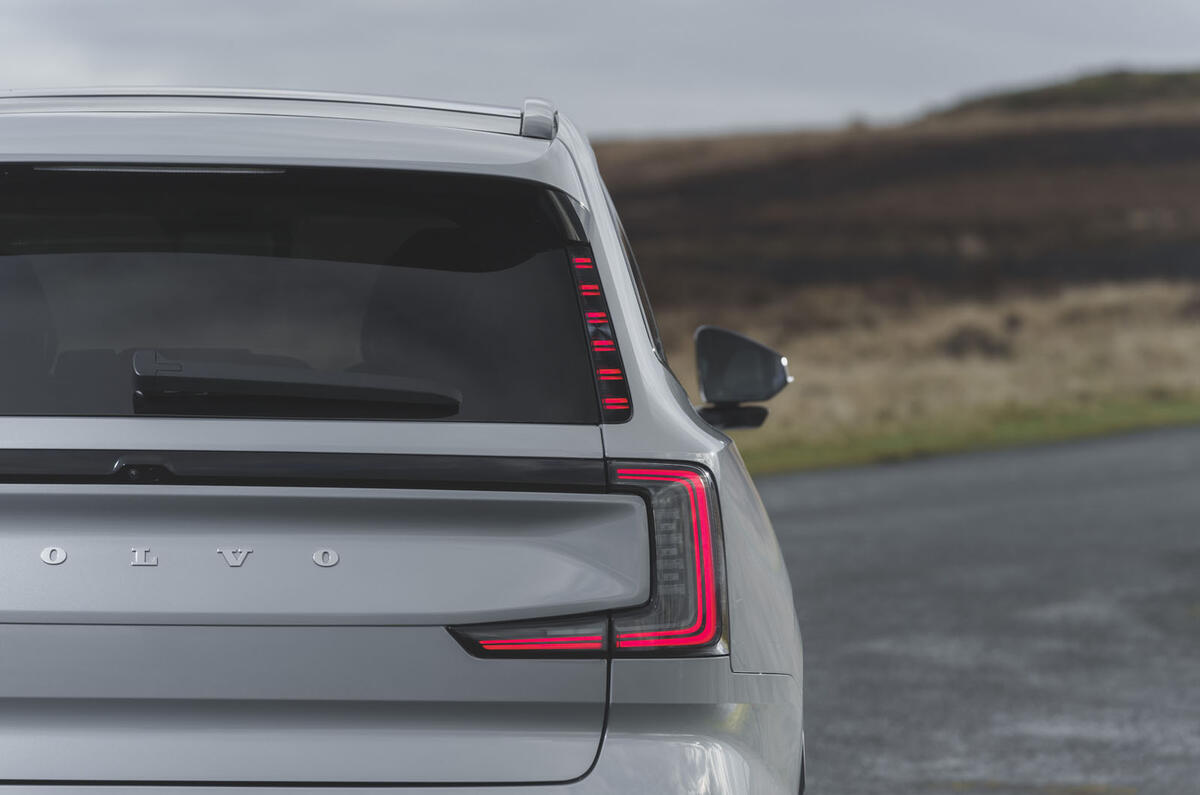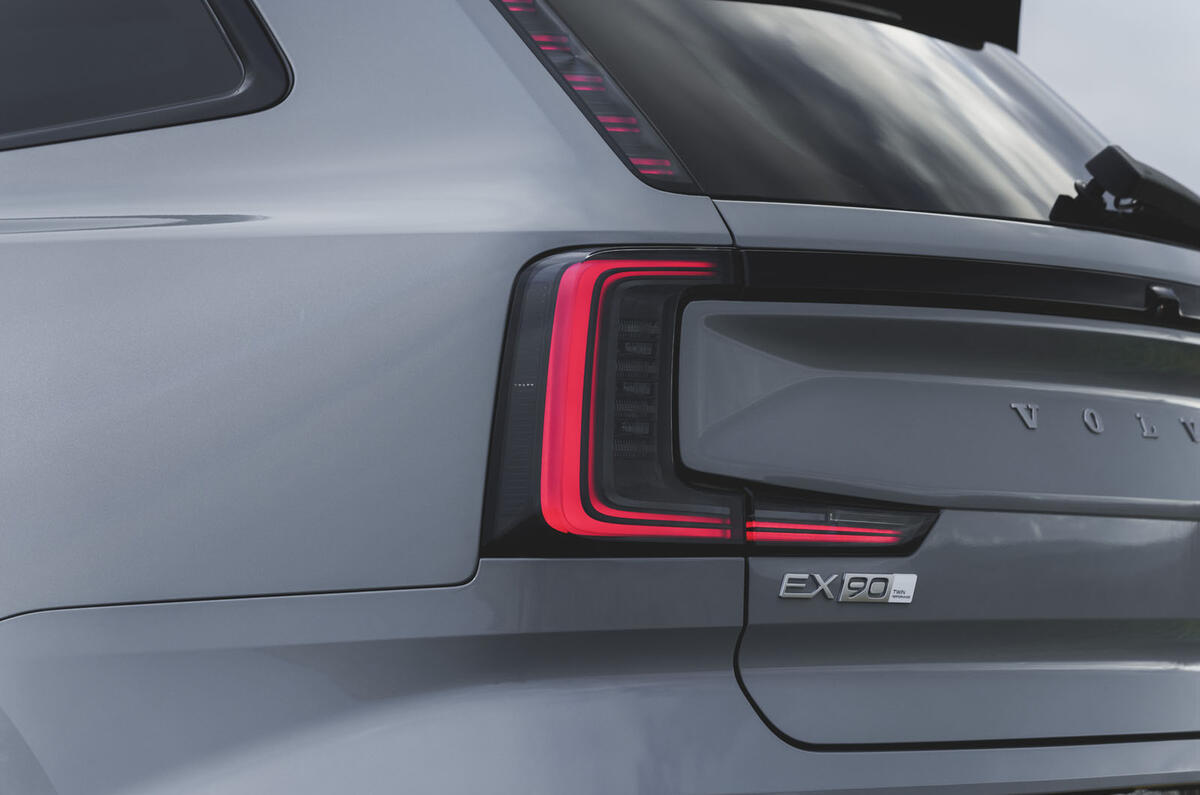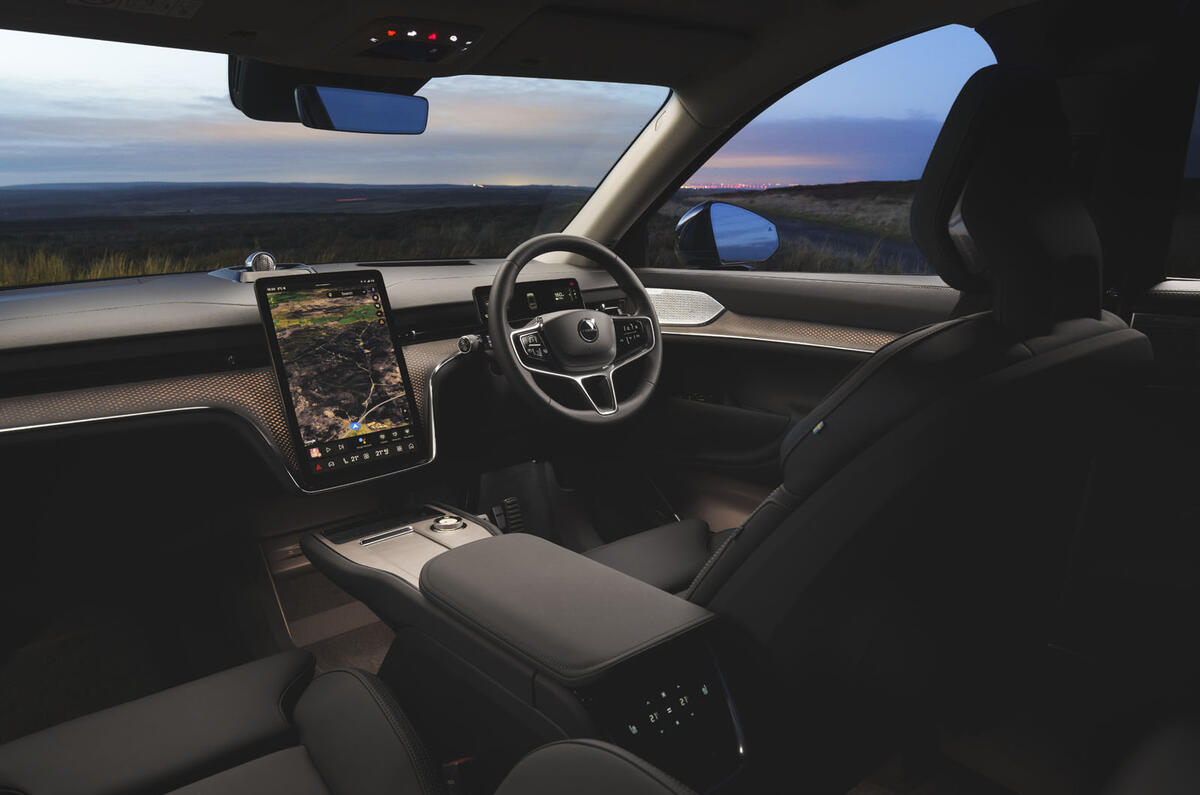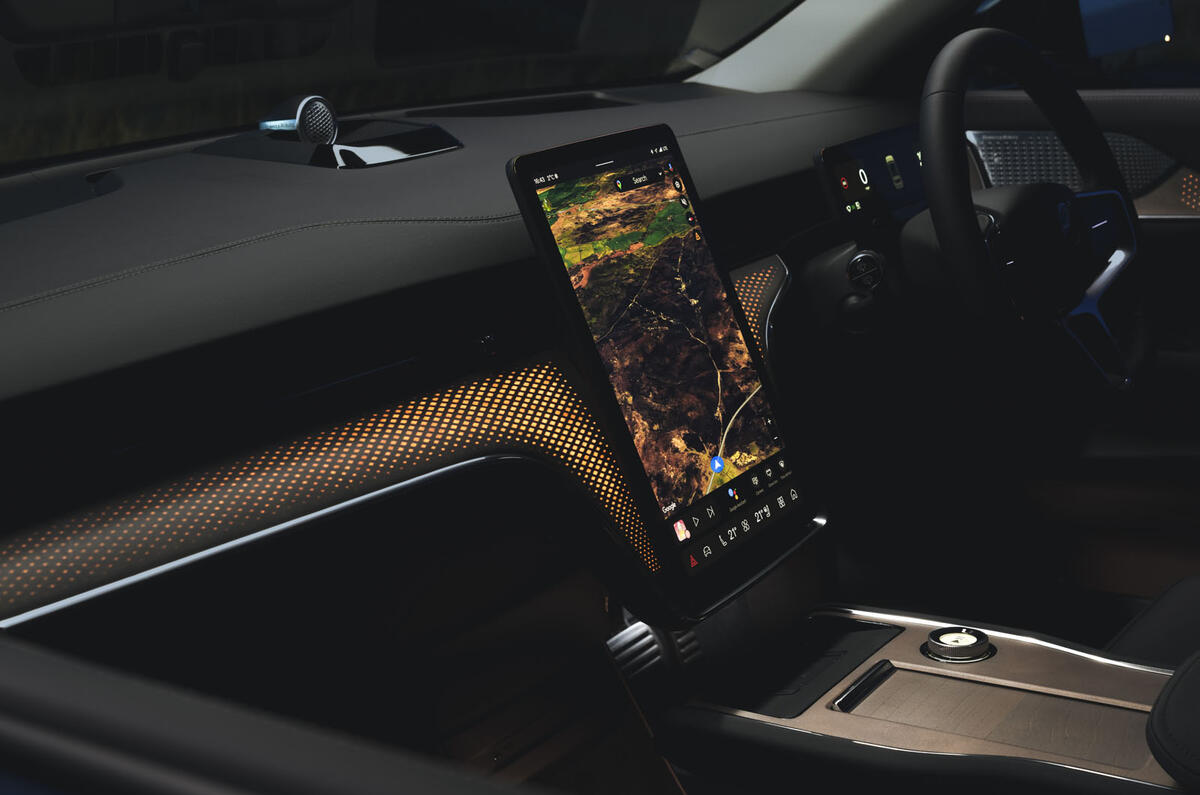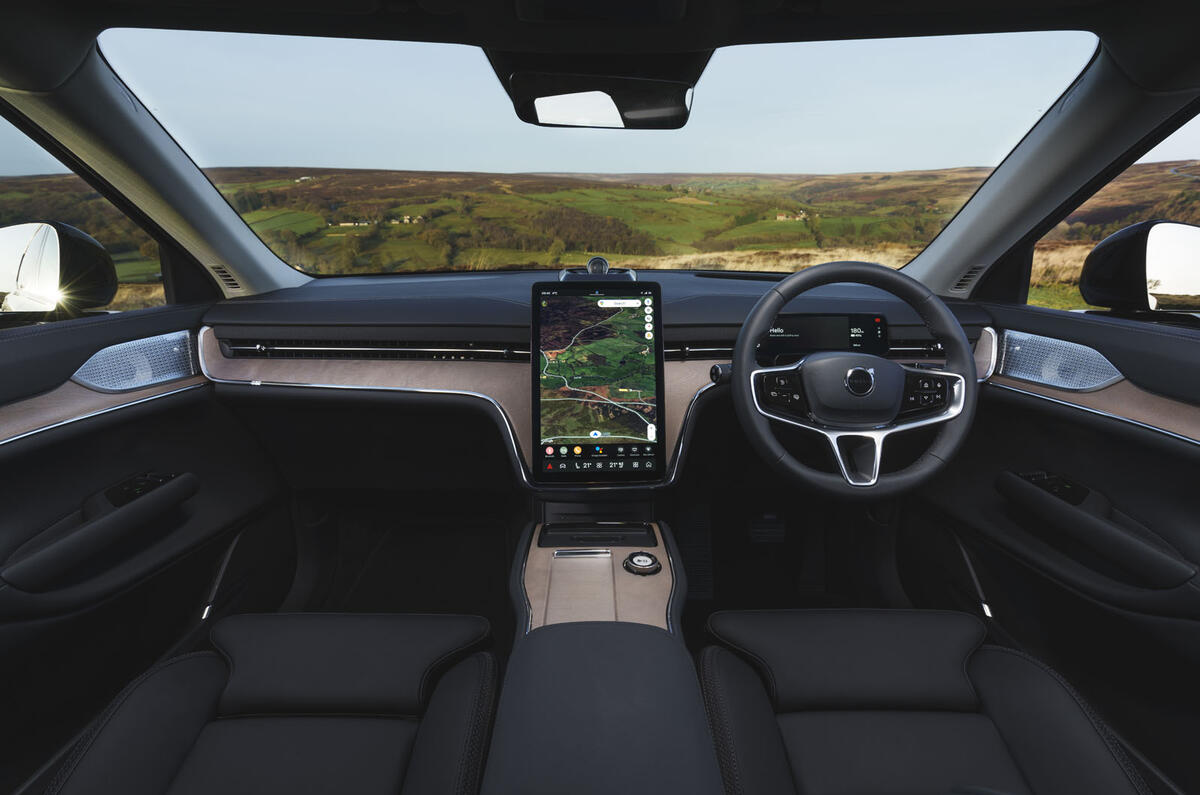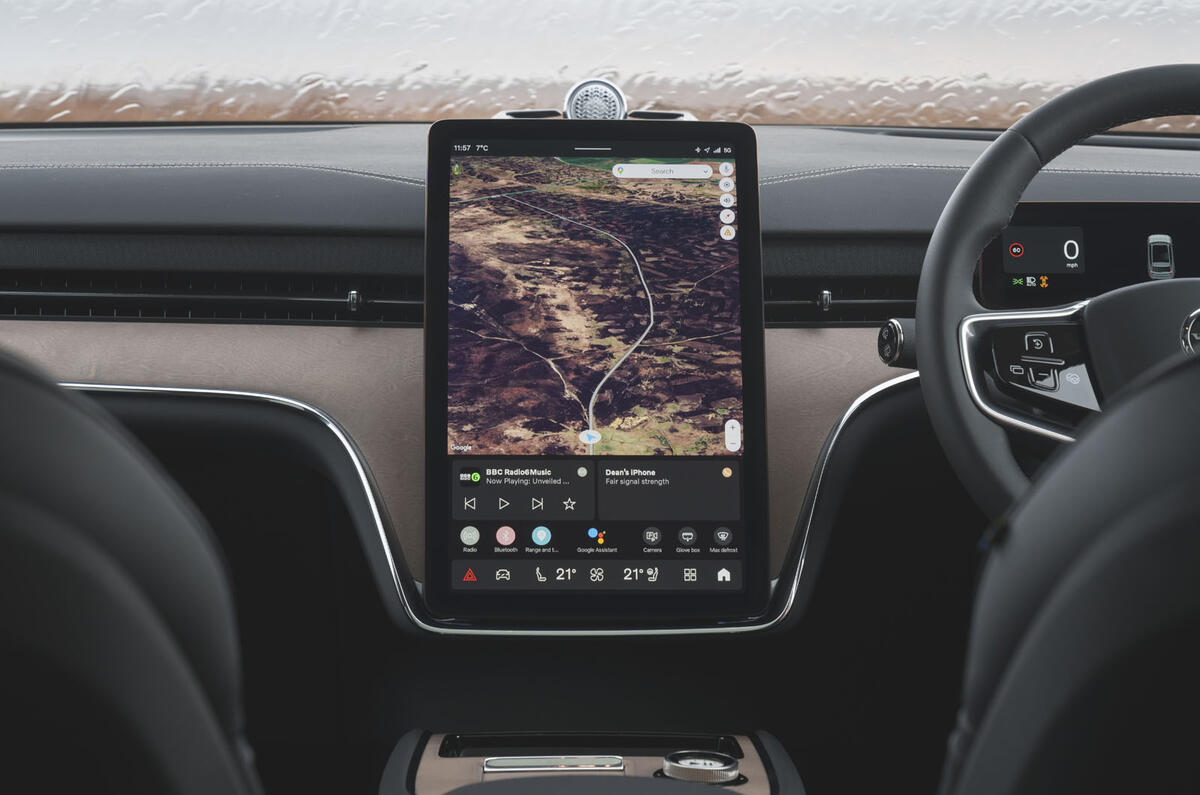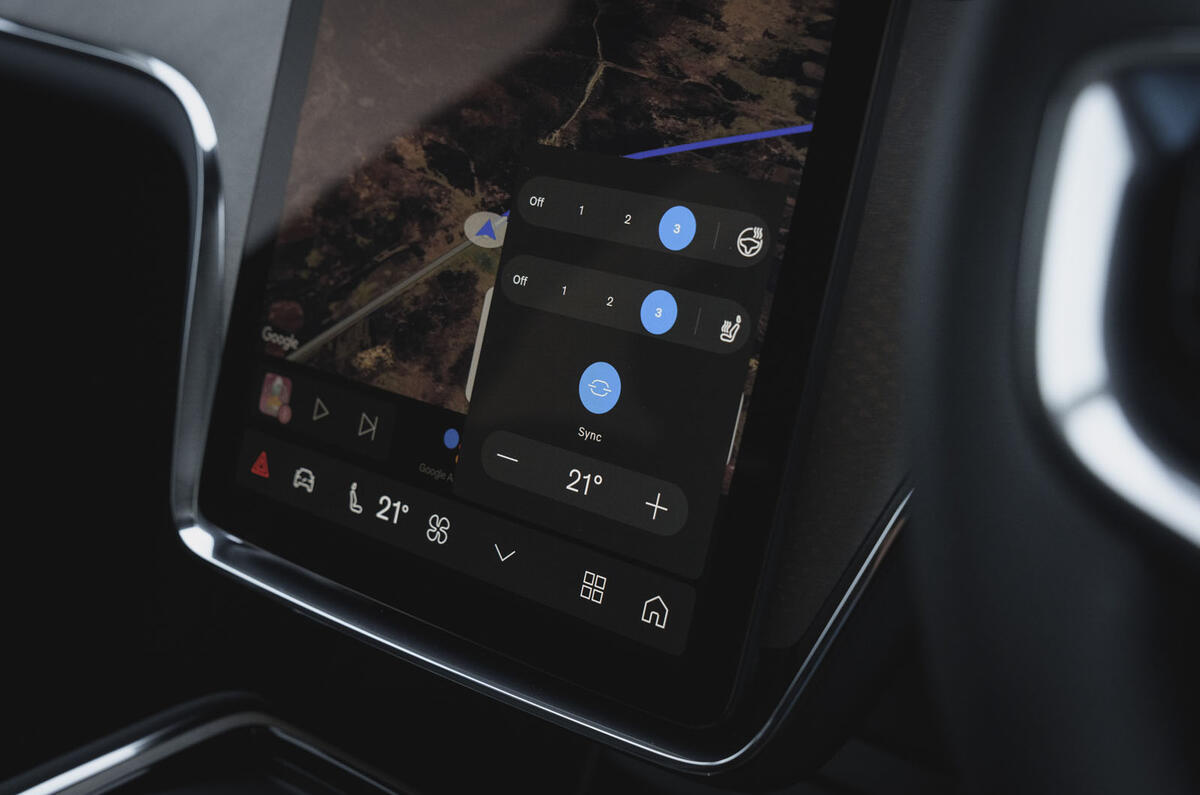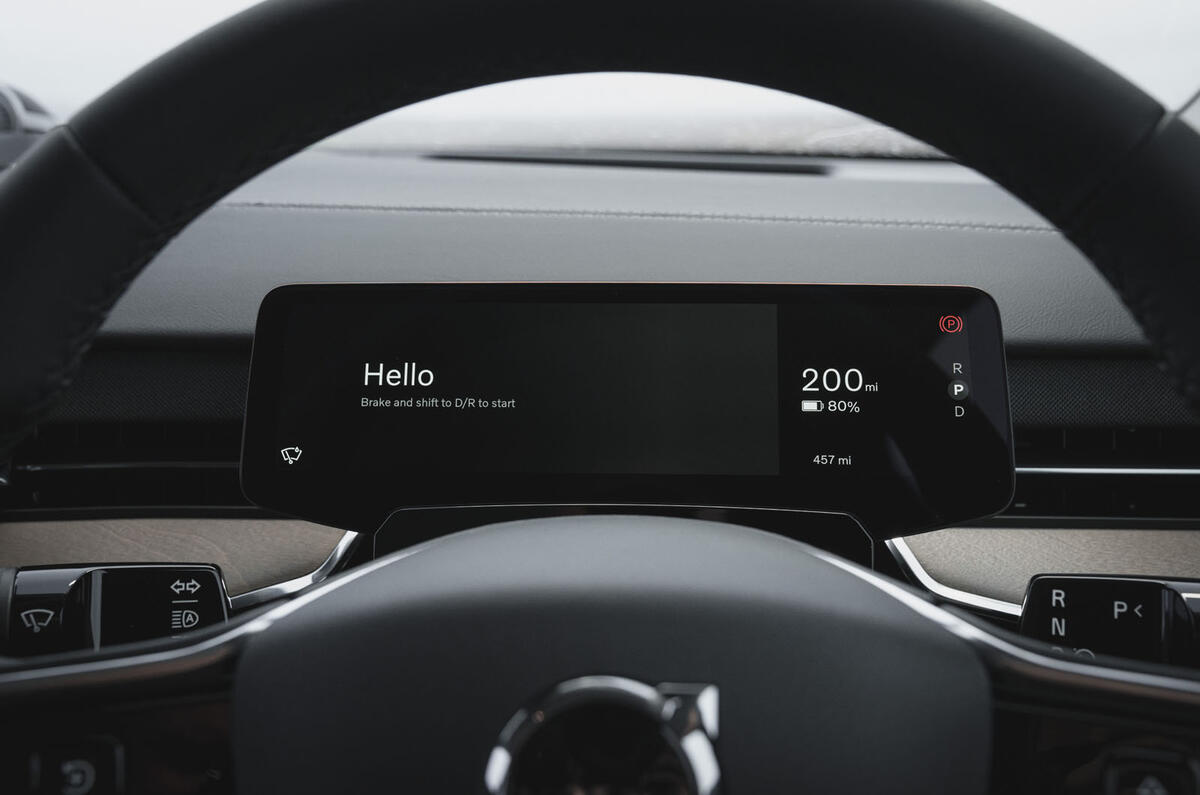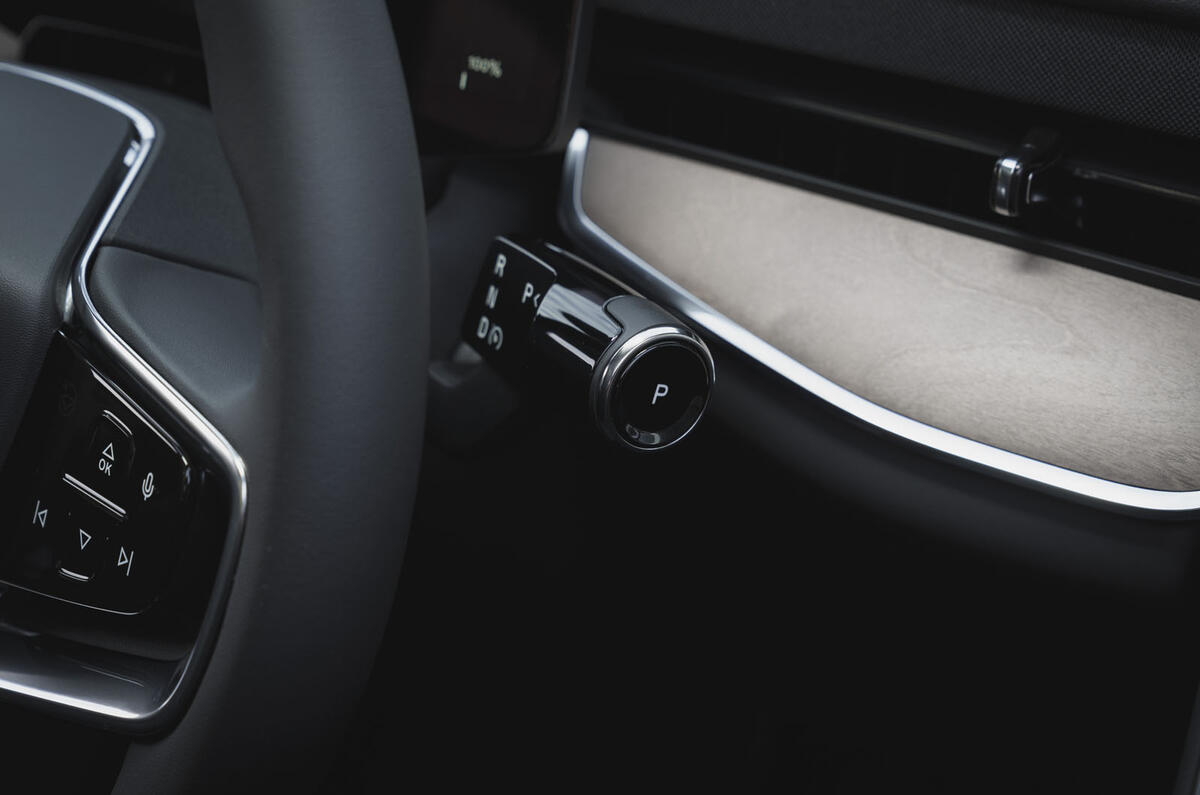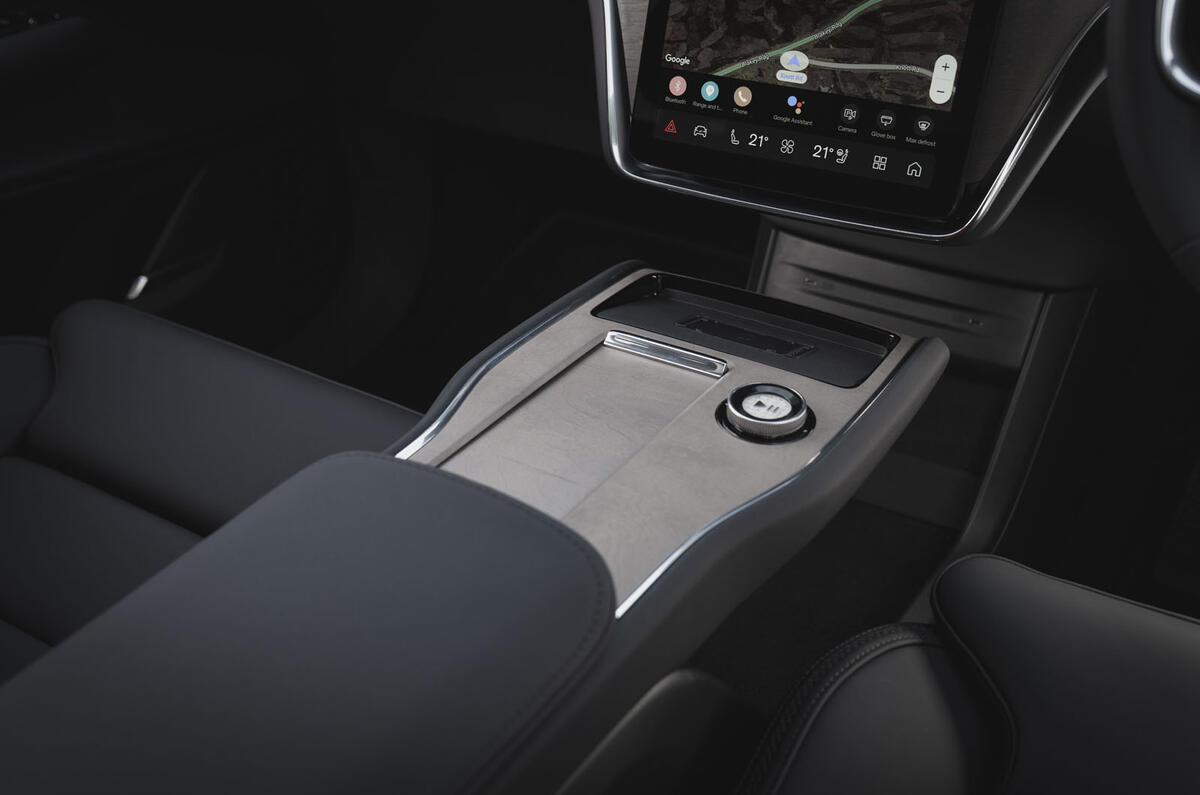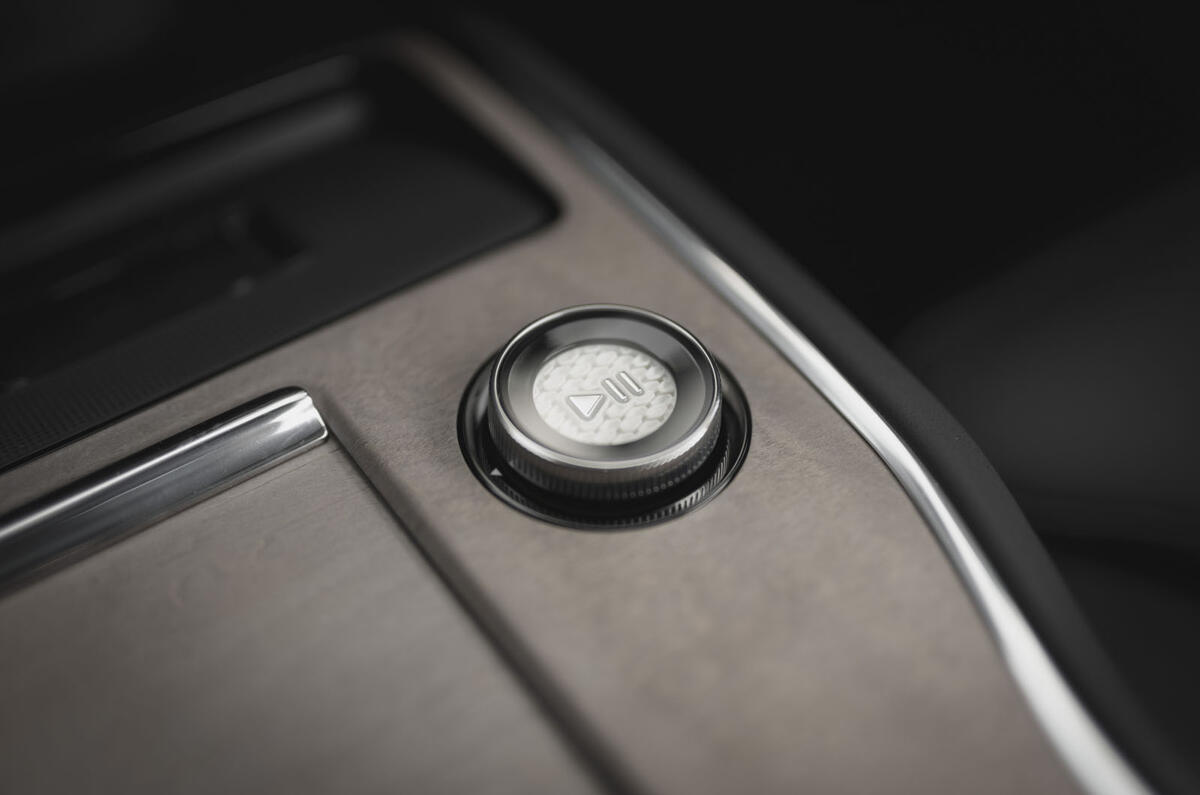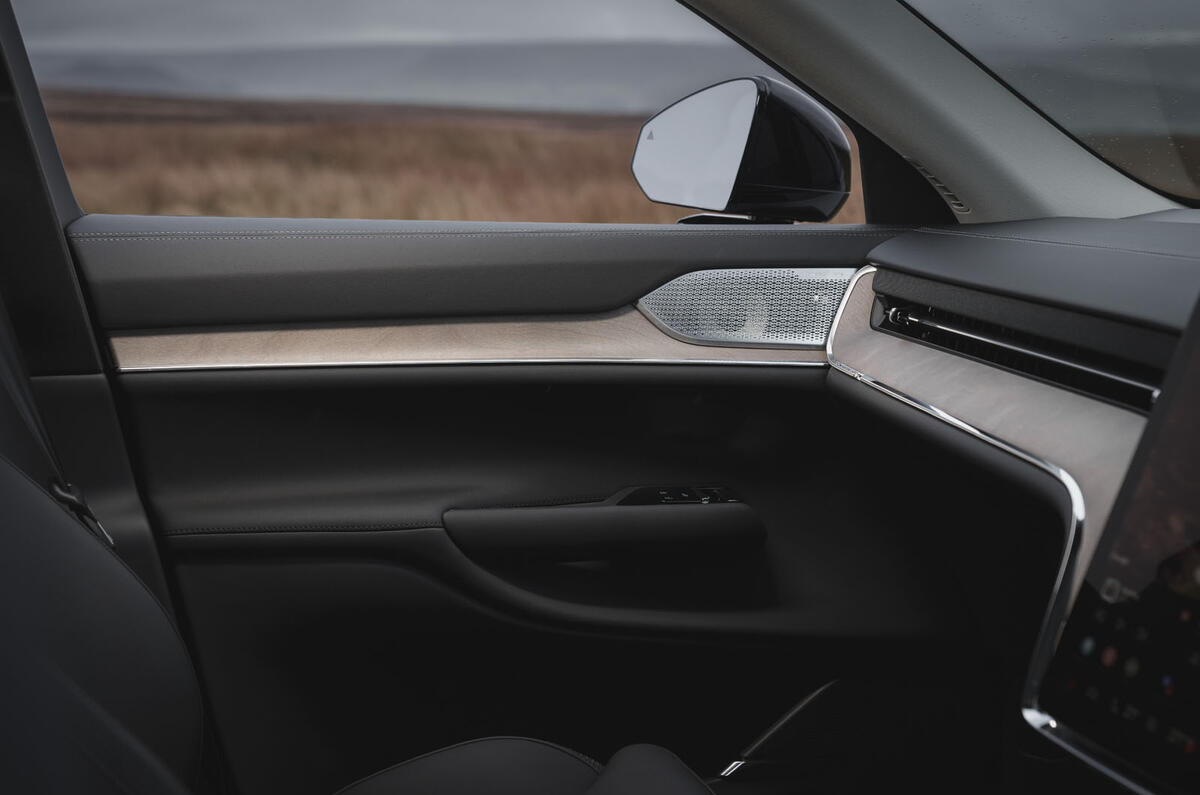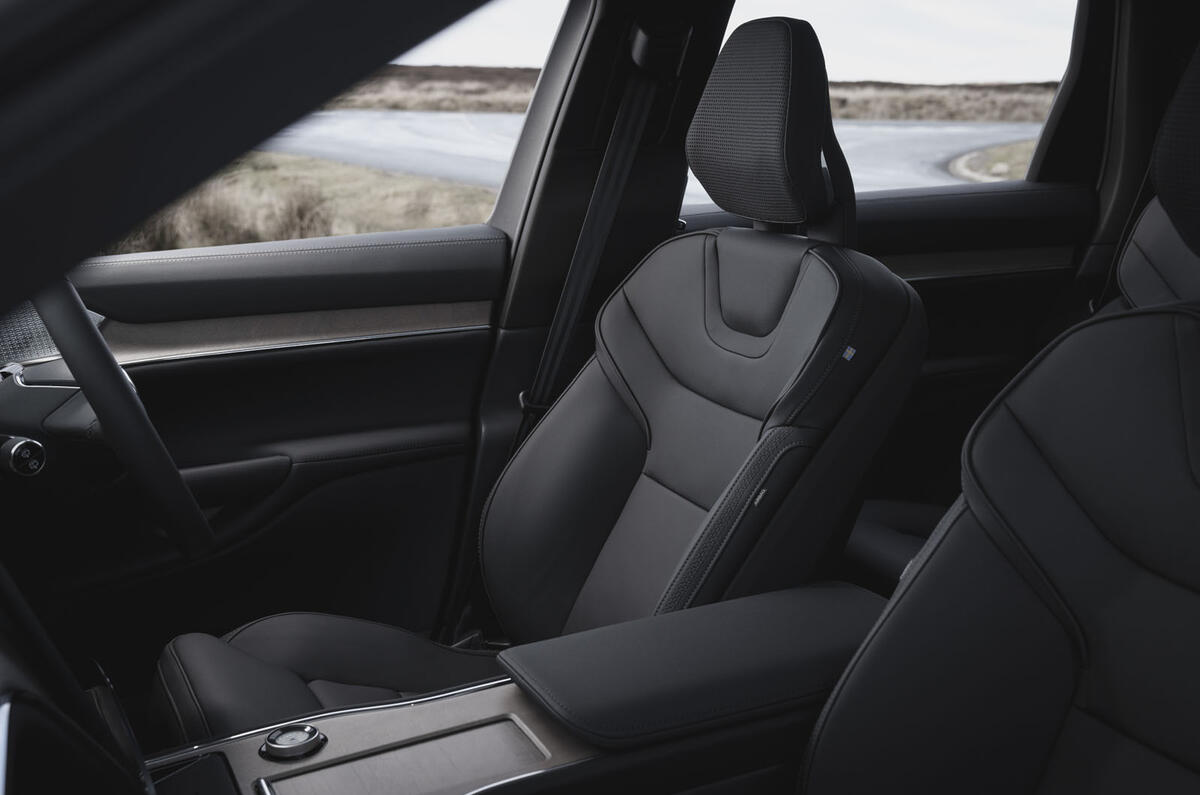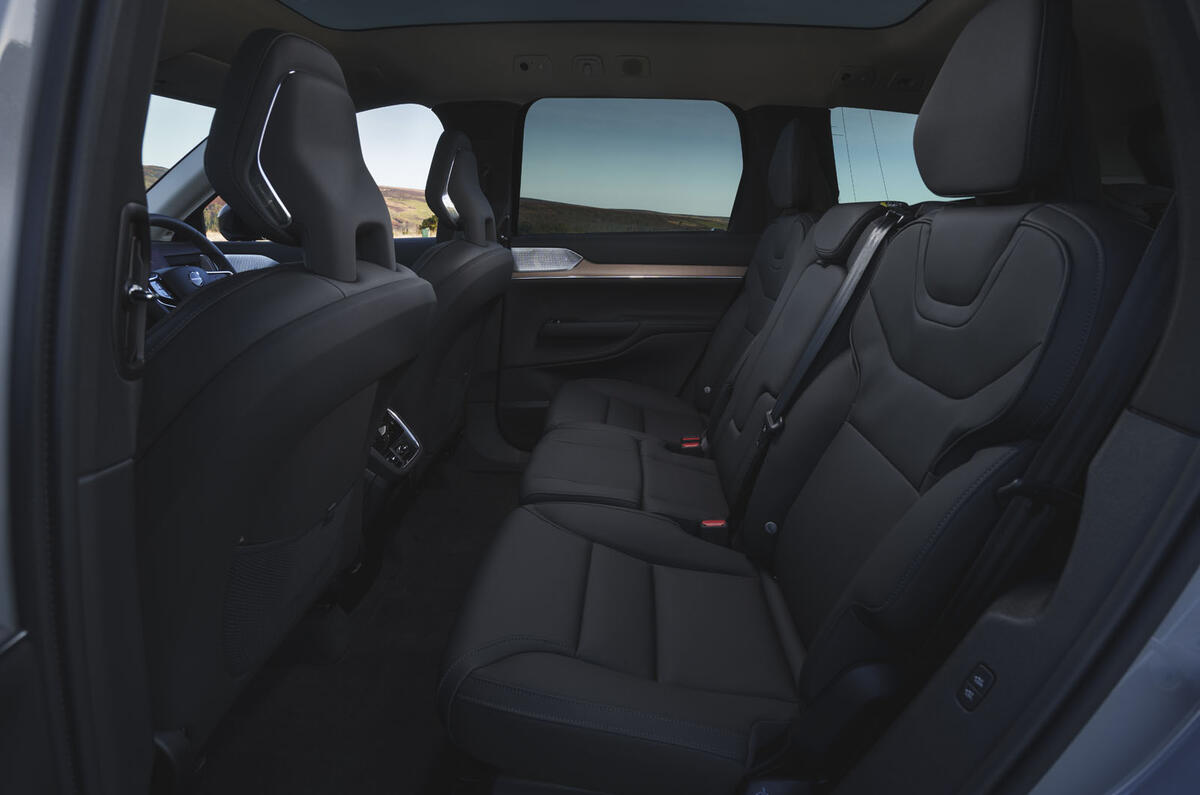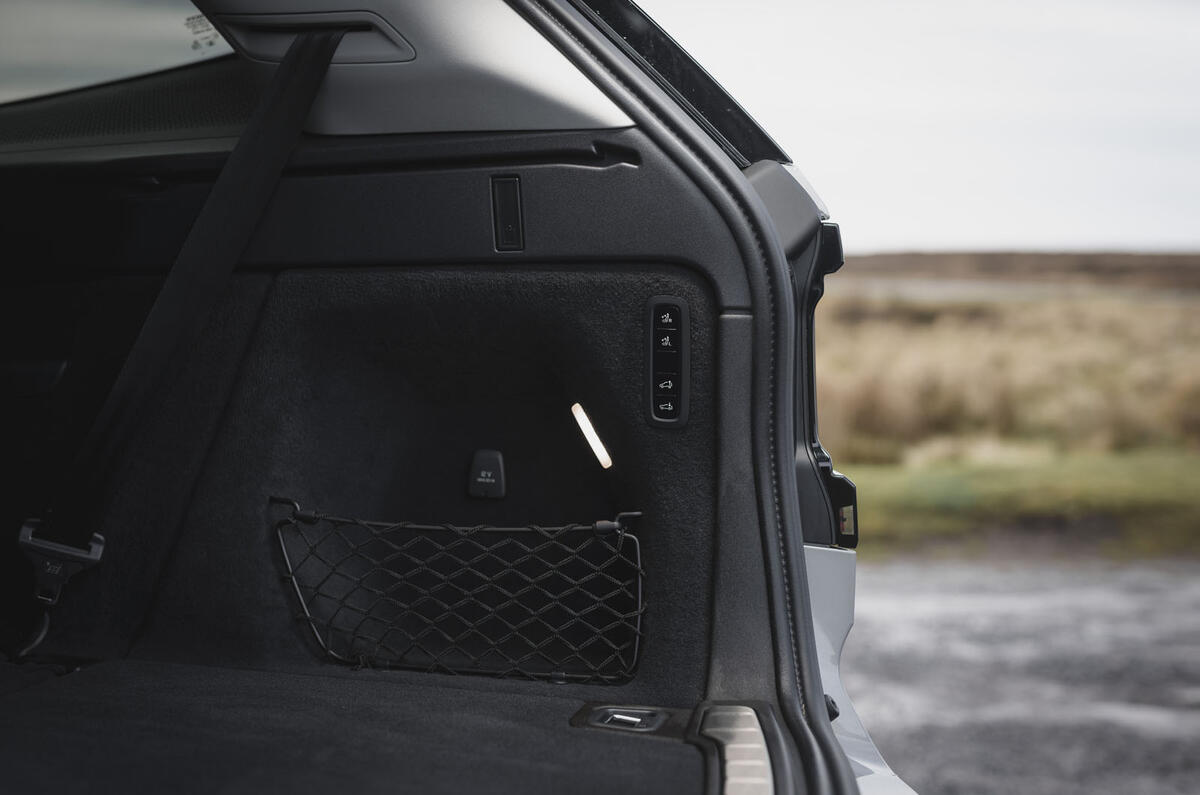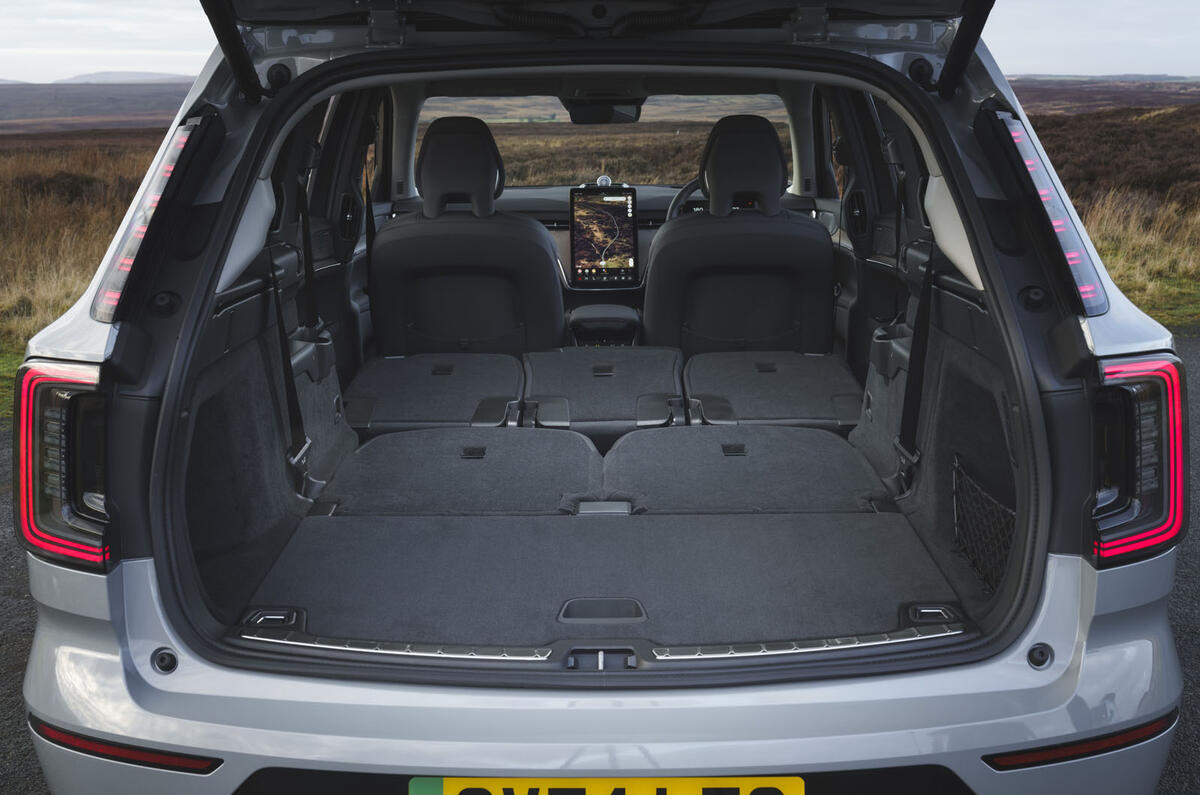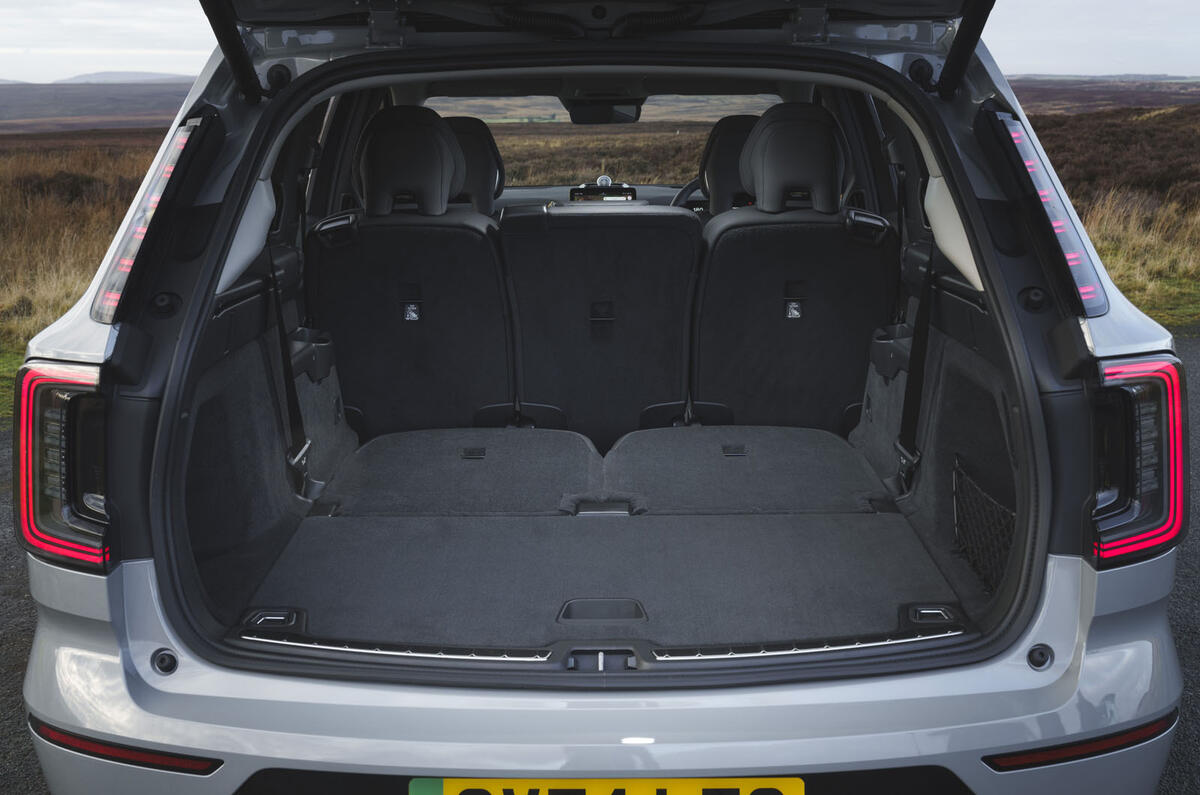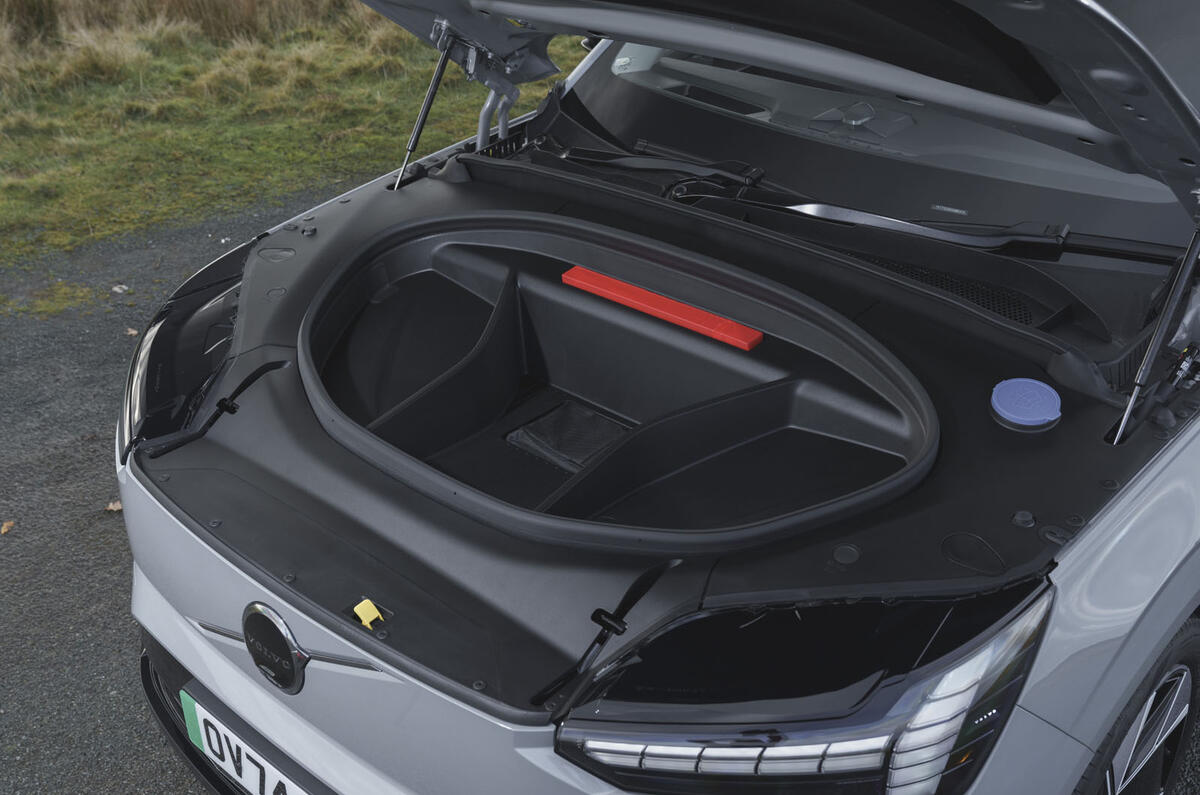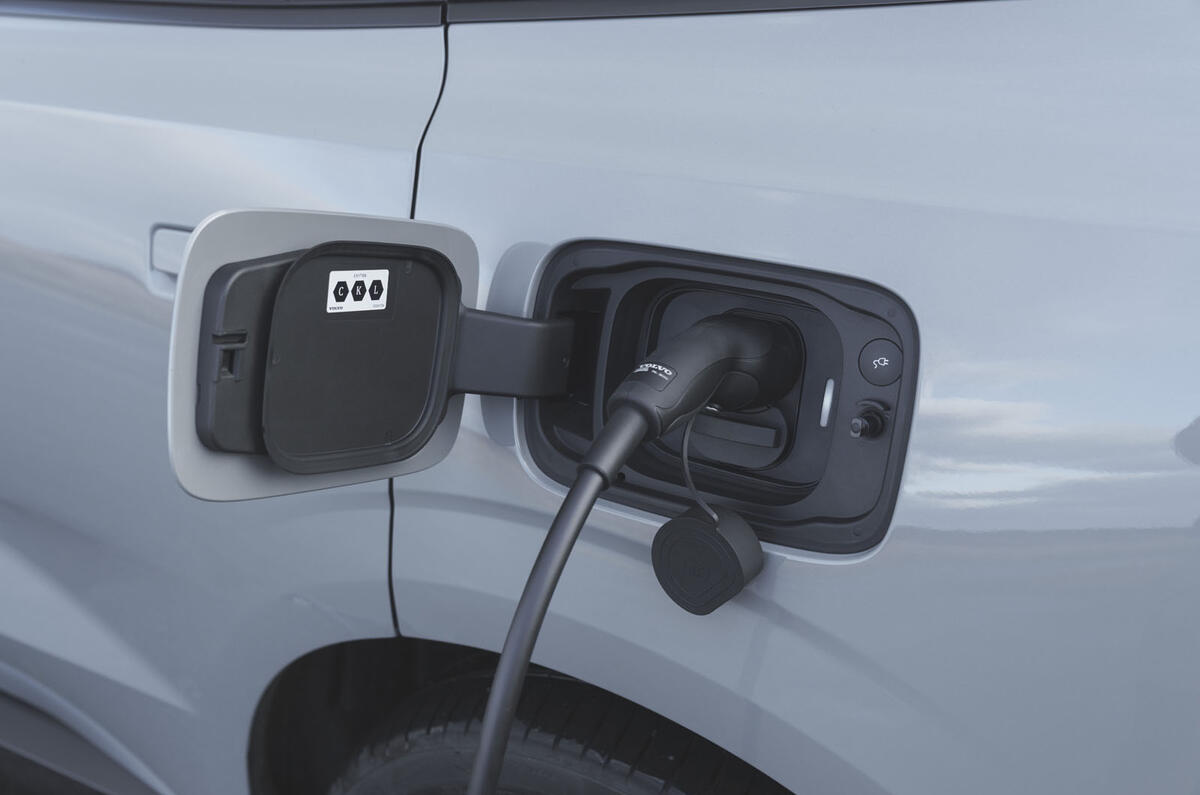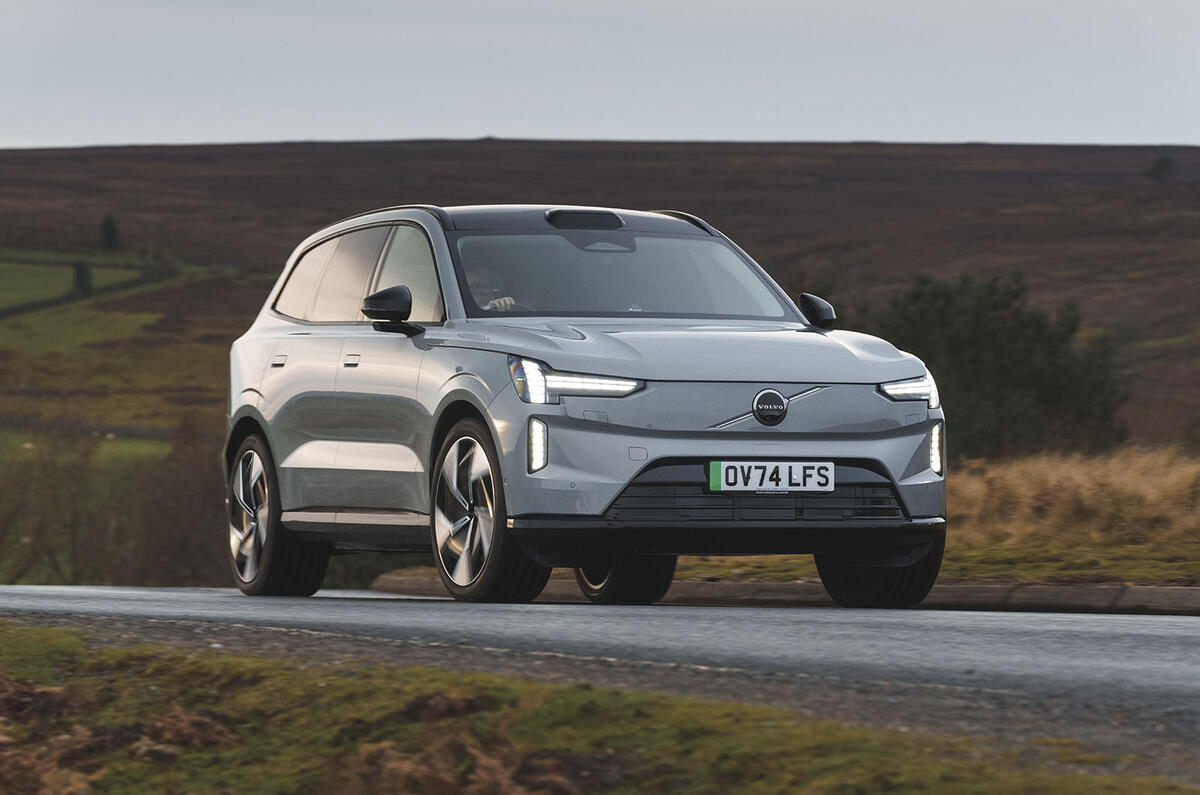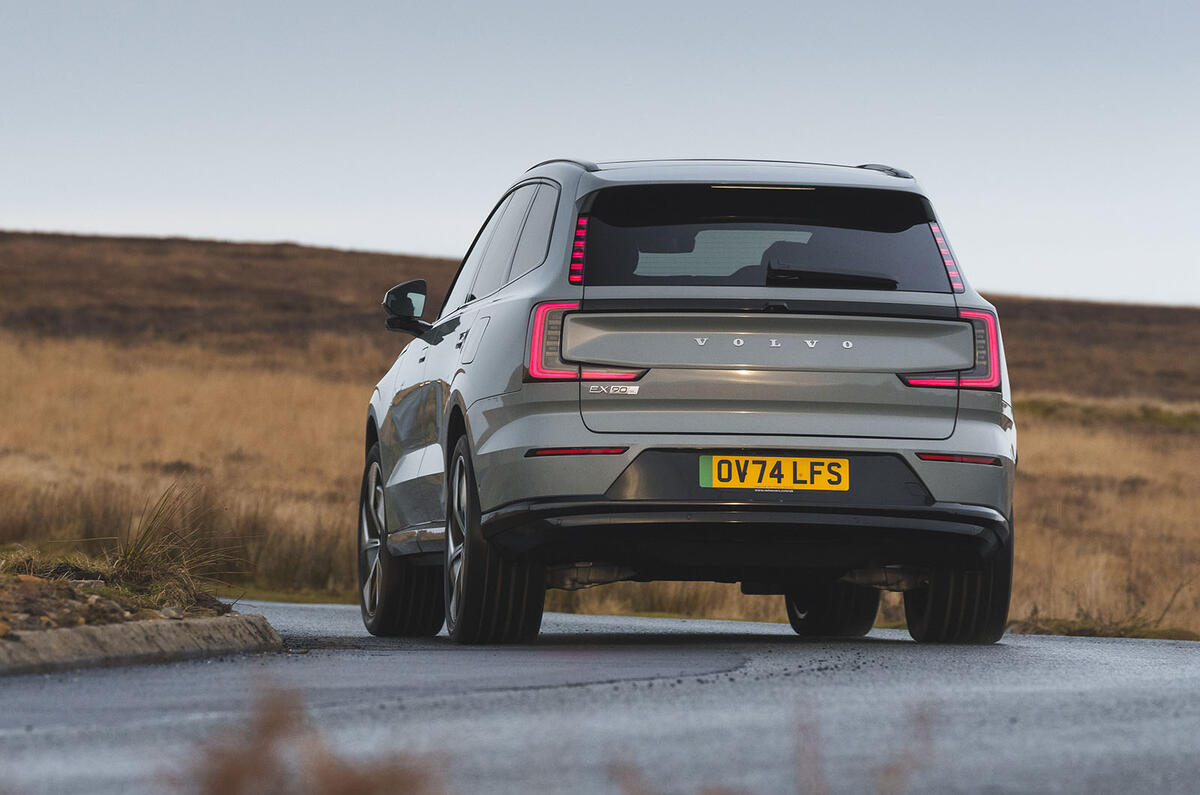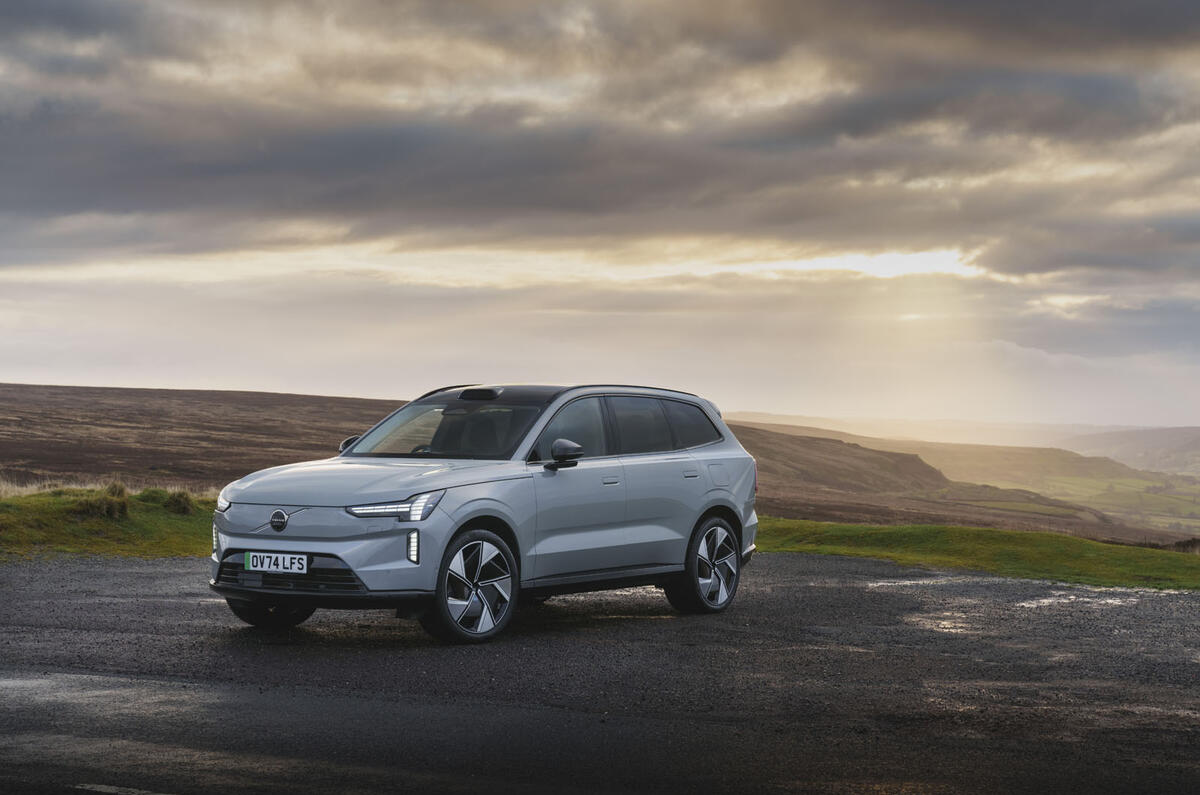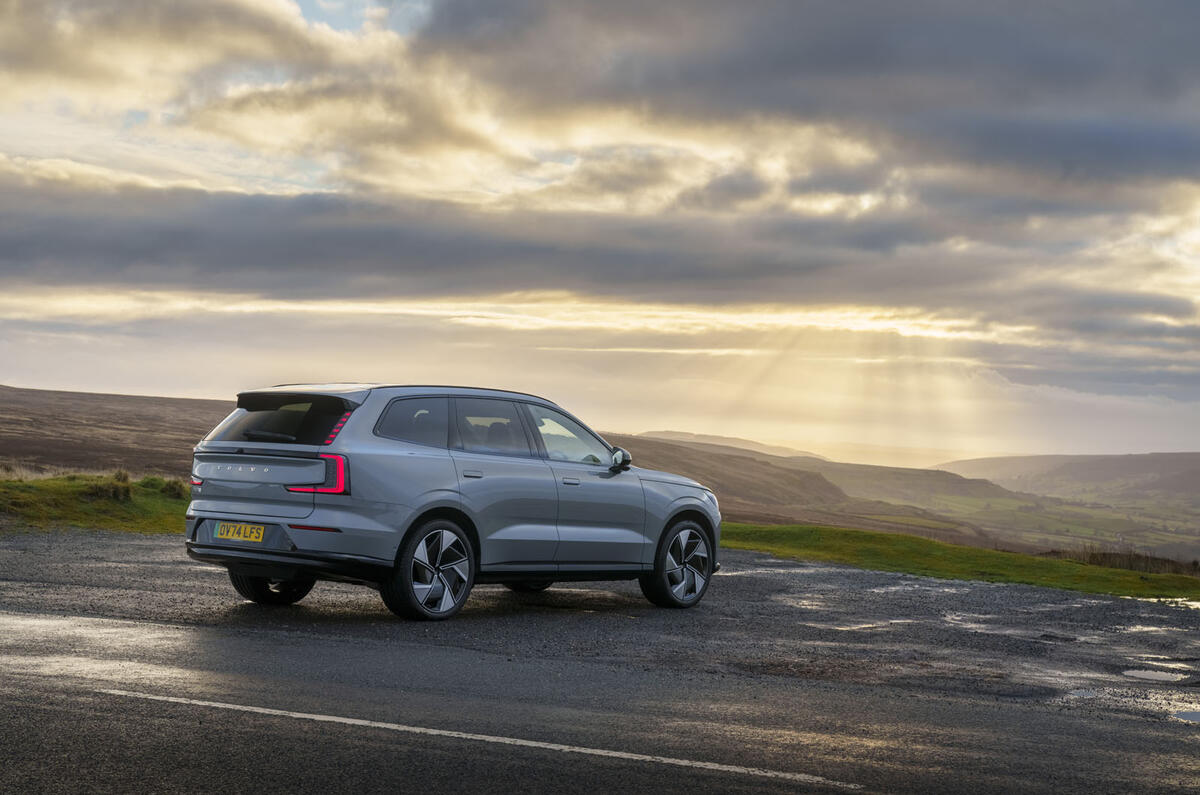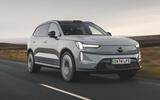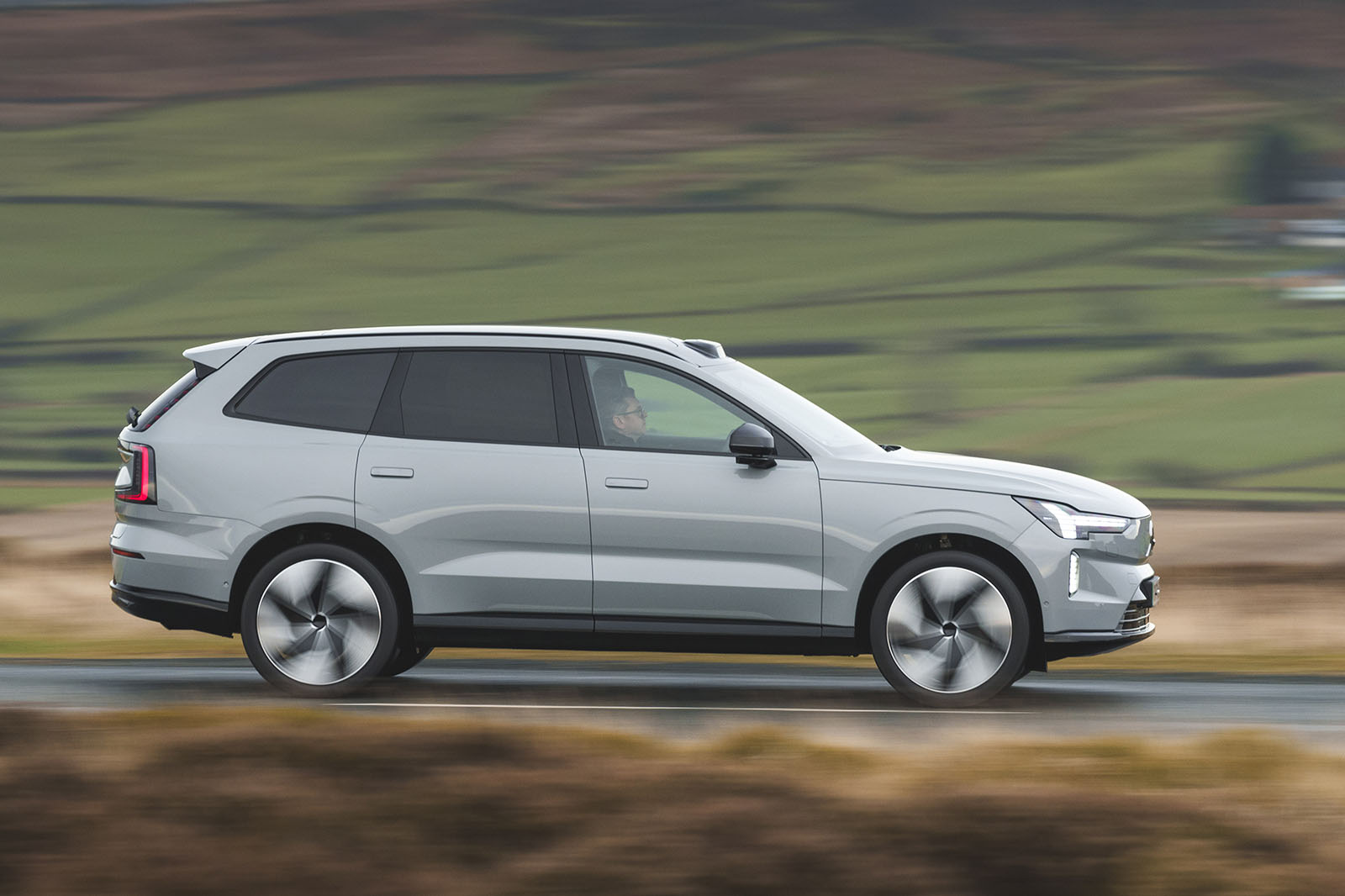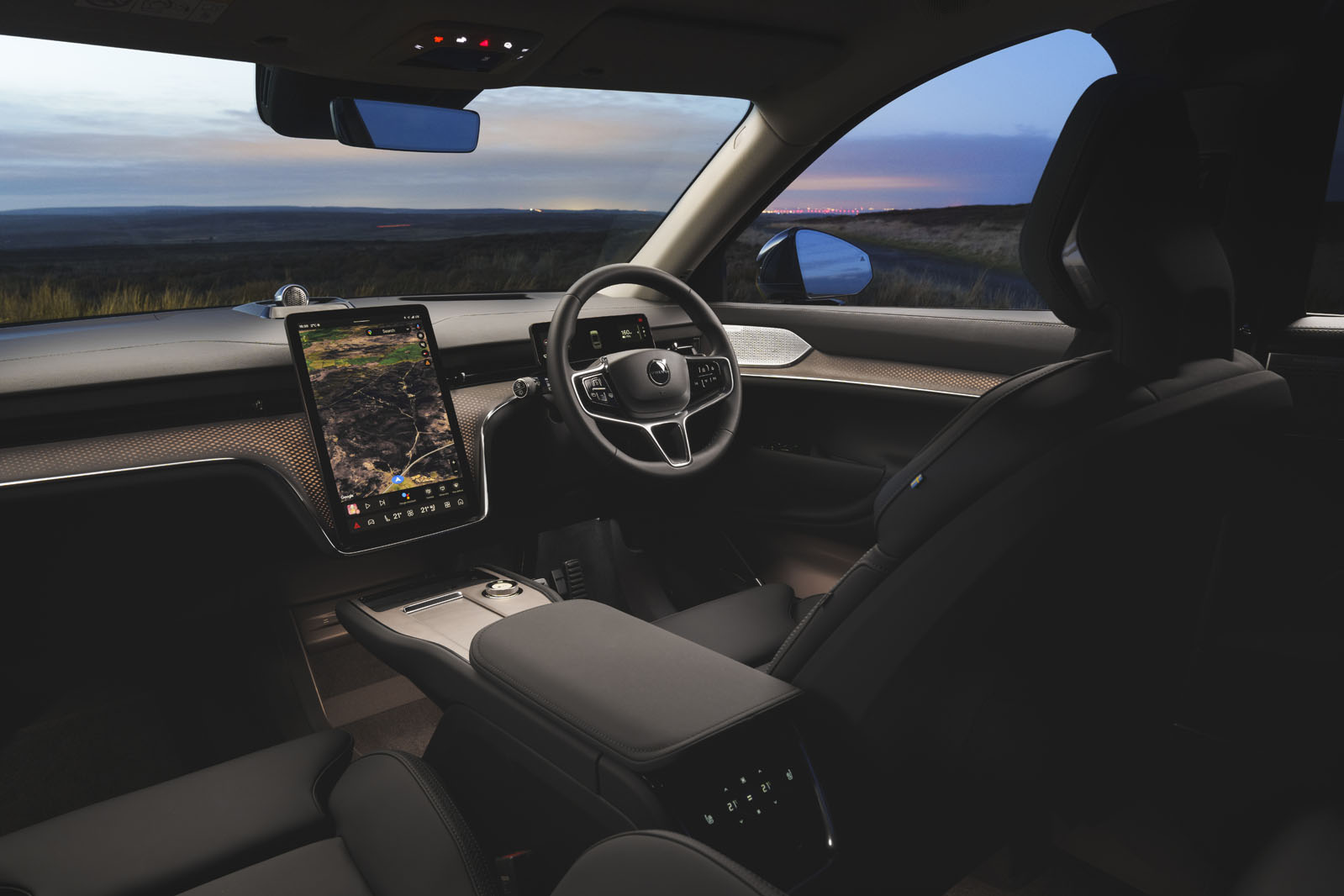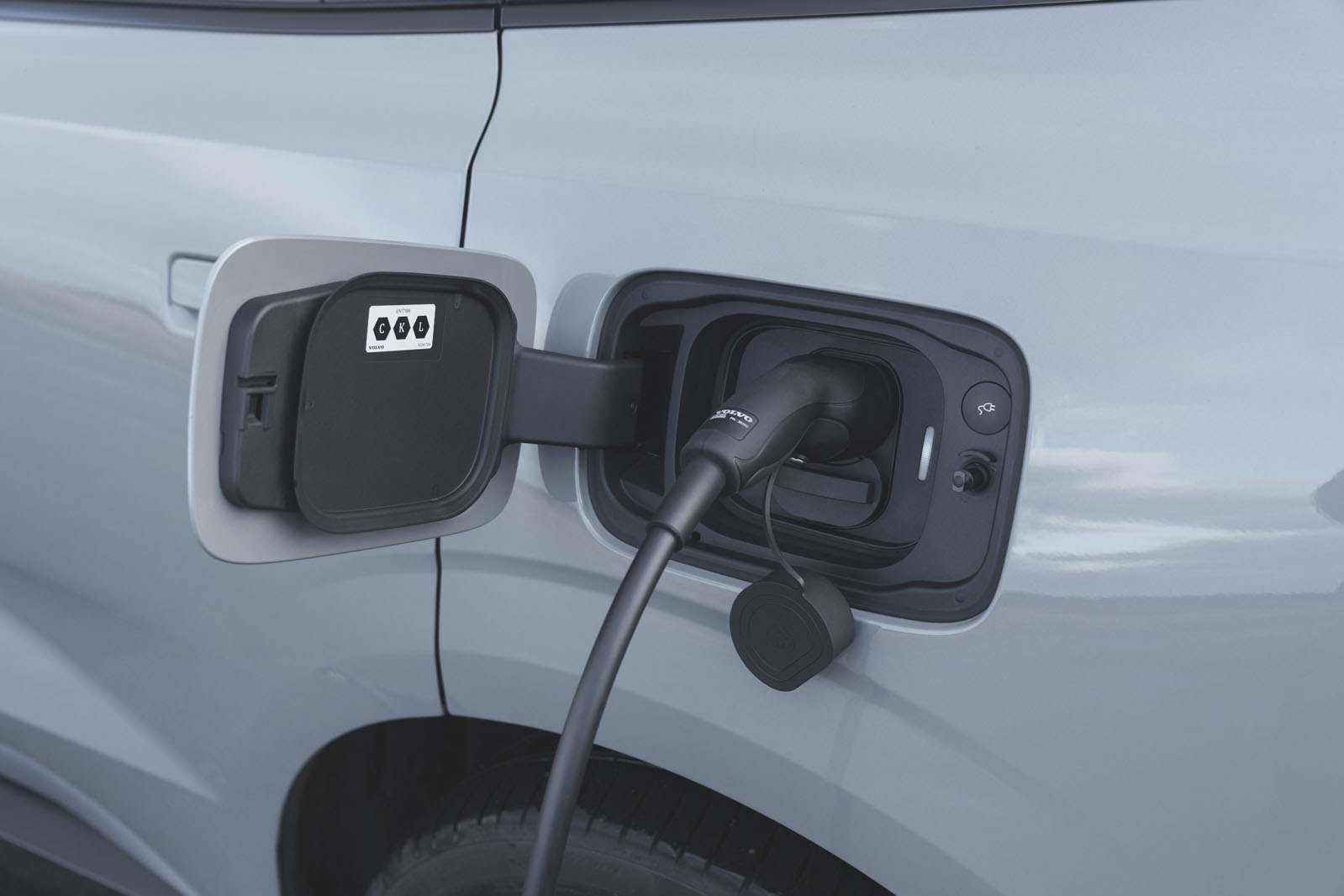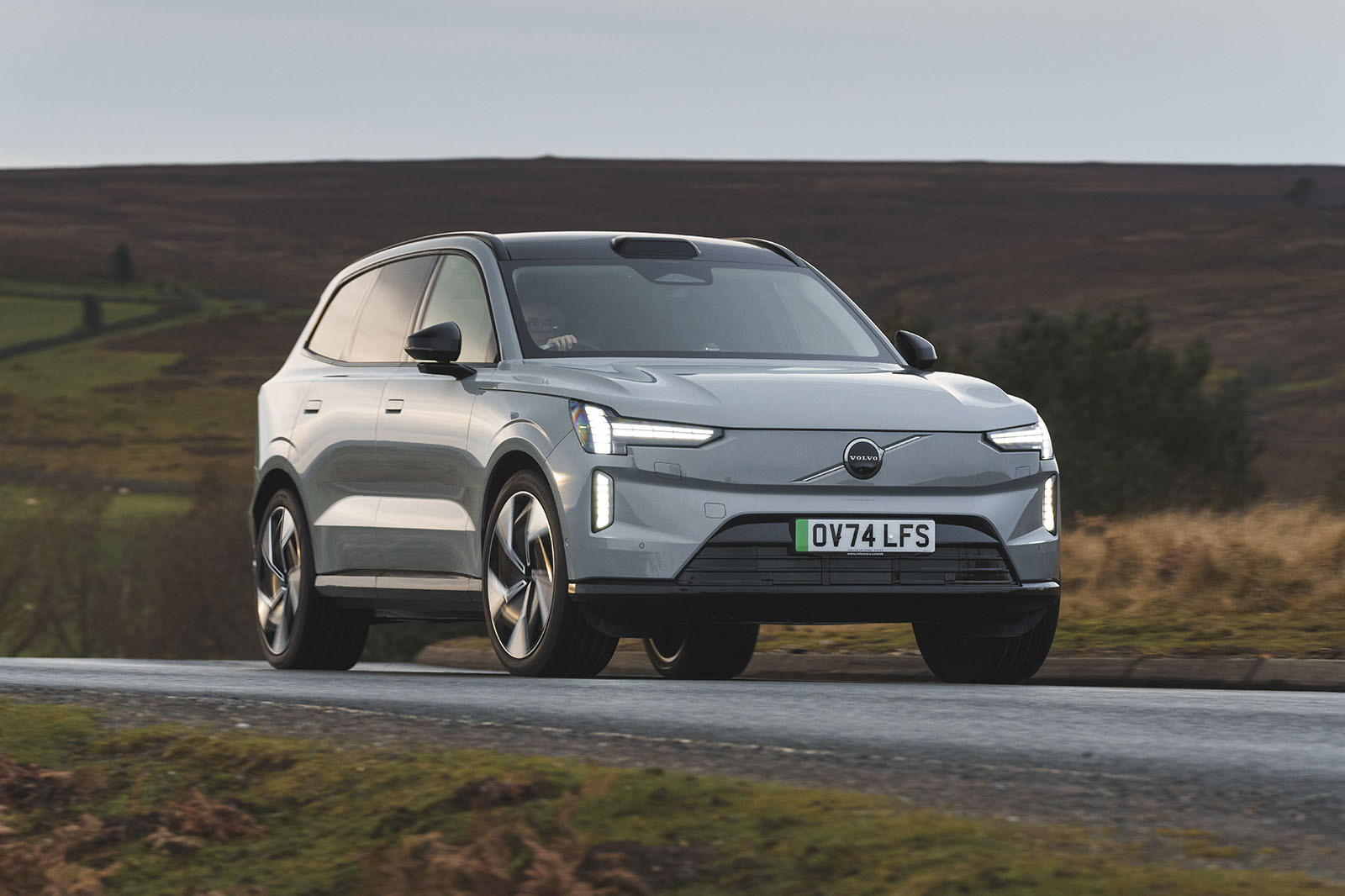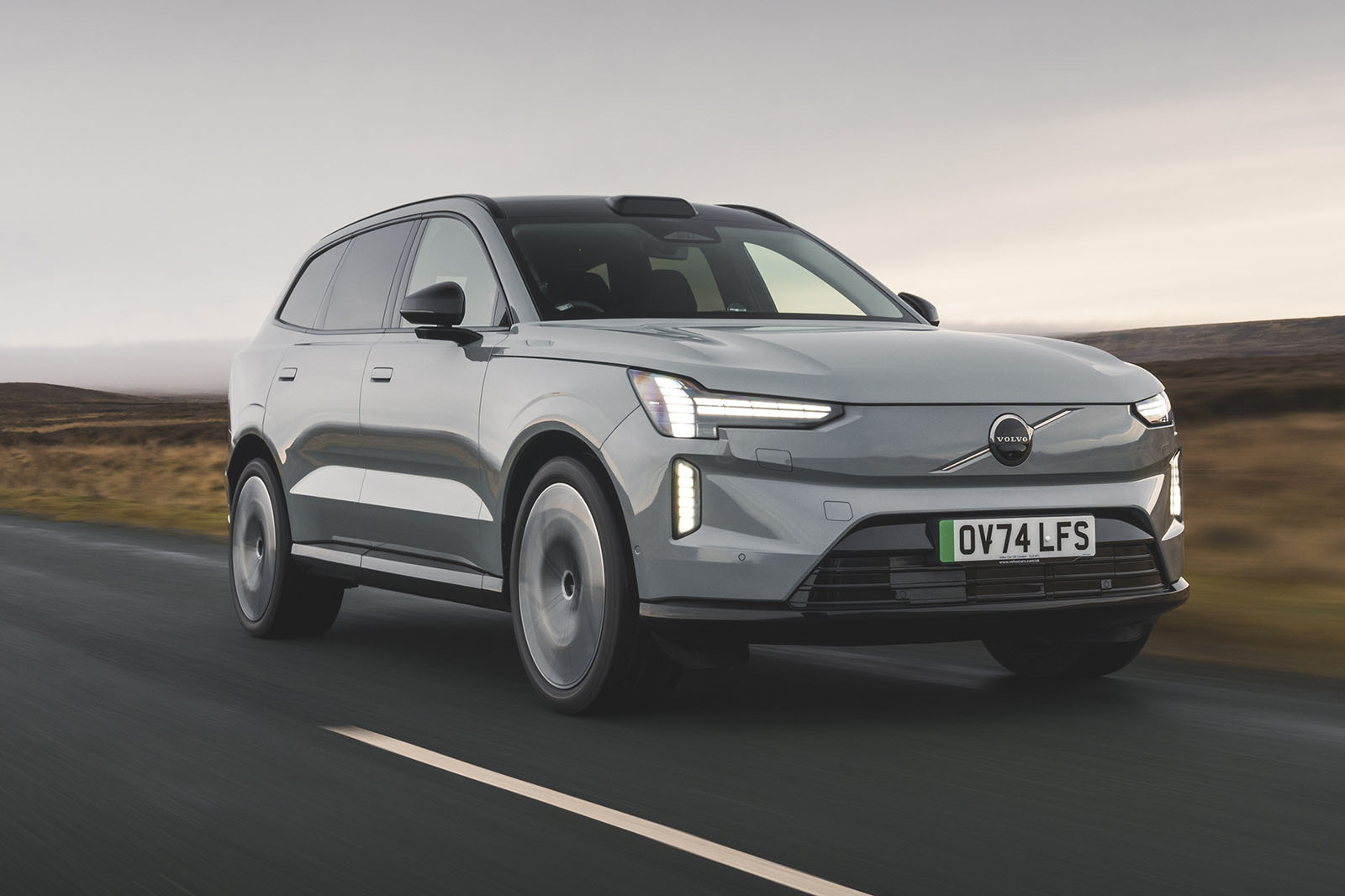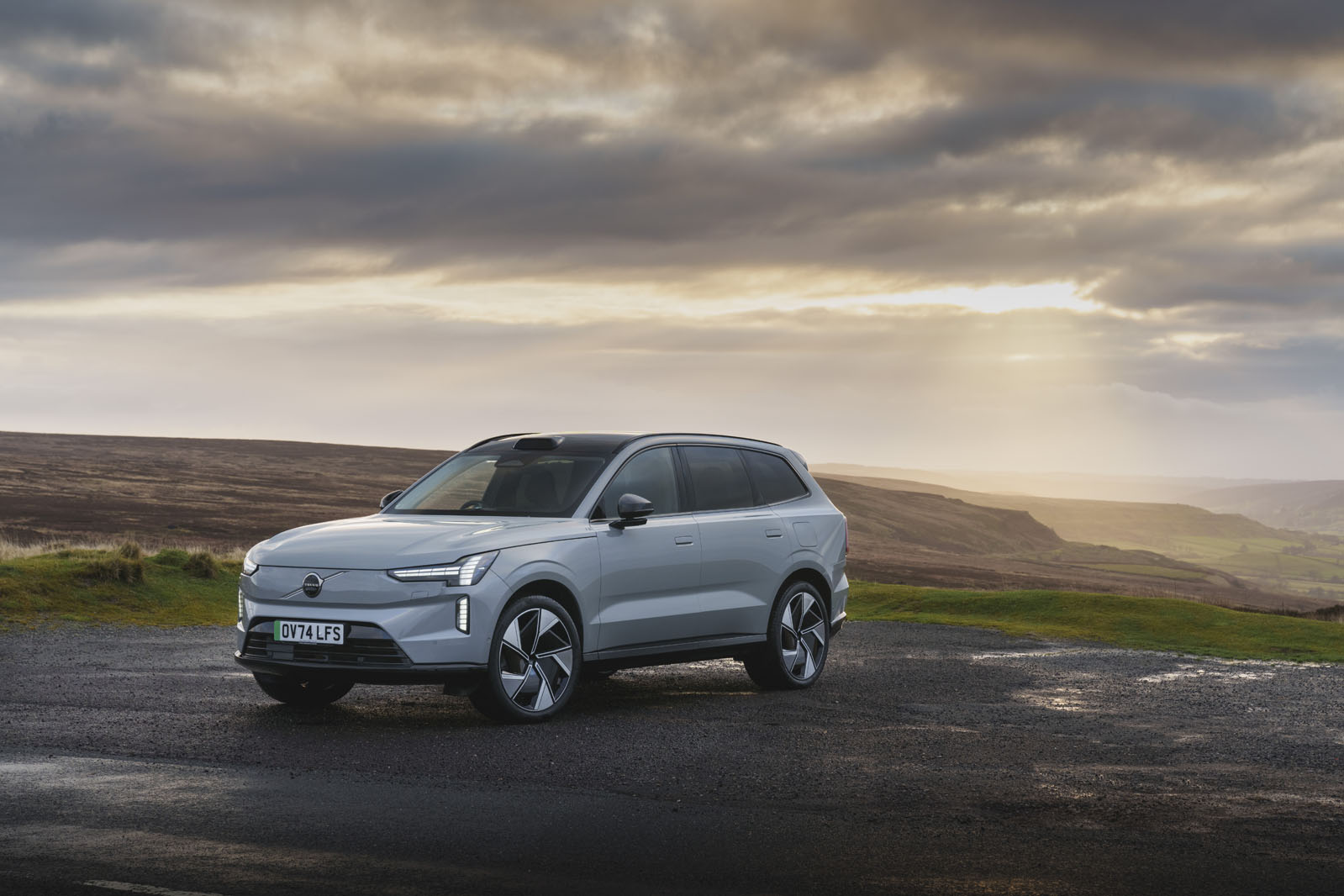The cabin has a nice Scandi ambience and a cool, premium feel, even if it doesn’t feel as opulent as, or have the 'wow' factor of, a BMW iX. It still feels high quality and individual in its style.
Look closer, however, and there is evidence of some very drastic cost-cutting of the sort that you might be just about willing to accept in a sub-£40,000 electric car, but is much harder to swallow in a near-£100,000 one. Where is the blind for the massive fixed glass sunroof? What about the switches for the rear windows? Or the controls for the mirror and steering column adjustment? All of the seat adjustments are done with one knob that cycles through various modes. The front passenger doesn’t even get a grab handle.
Unlike in the EX30, you do get a dedicated driver display for the speed, the map and so on, and there’s a head-up display. That shouldn’t be a notable feature, but here we are.
The large 14.5in touchscreen using a Google-based operating system still does all the heavy lifting. The interface is basically the same as on the Volvo EX30, and it’s still a bit of a disaster.
Good stuff first: the screen looks great and because it runs on Google, you can log in with a Google account and have recent and saved destinations waiting for you in the native navigation, which is Google Maps. Then again, there are some privacy implications with that idea that you might not like.
There’s a permanent bar at the bottom with shortcuts for car settings, home screen and climate controls. But already the trouble starts, because to adjust the temperature or heated seats you need to open a little menu, make the adjustment, then close it again.
Above that sits a contextual shortcut bar. You can’t choose which buttons it shows; instead, the car guesses based on your habits which functions you might need. It’s part of Volvo’s ‘calm complexity’ philosophy, where it gives you as many functions to control with as few elements as possible in order for it ‘not to be confusing’. As you can imagine, this does not work, because nothing is ever where you left it. Opening the glovebox or viewing the energy efficiency is done through one of these ‘buttons’ – if you’re lucky.
Often, the function you want is buried under five layers of menus, which would be bad enough if the screen responded instantly, but it doesn’t.
As already mentioned, there’s no Apple CarPlay or Android Auto from launch, so if you want to use WhatsApp or Apple Music, you’re whistling.
There’s more of this sort of nonsense, but we won’t go on. You’ll undoubtedly get used to some of it over time, but it’s not a £100,000 experience, is it?
The amount of passenger and storage space in the EX90 is good, if not exceptional. You can get reasonably comfortable in even the third row of seats for short journeys, the way the seats fold and slide is well thought out, the boot remains decent at 310 litres even with all the seats up (with the rear two seats down, the boot is 655 litres), and there’s some underfloor storage and a 49-litre 'frunk'. A Kia EV9 is roomier, but not as upmarket.




